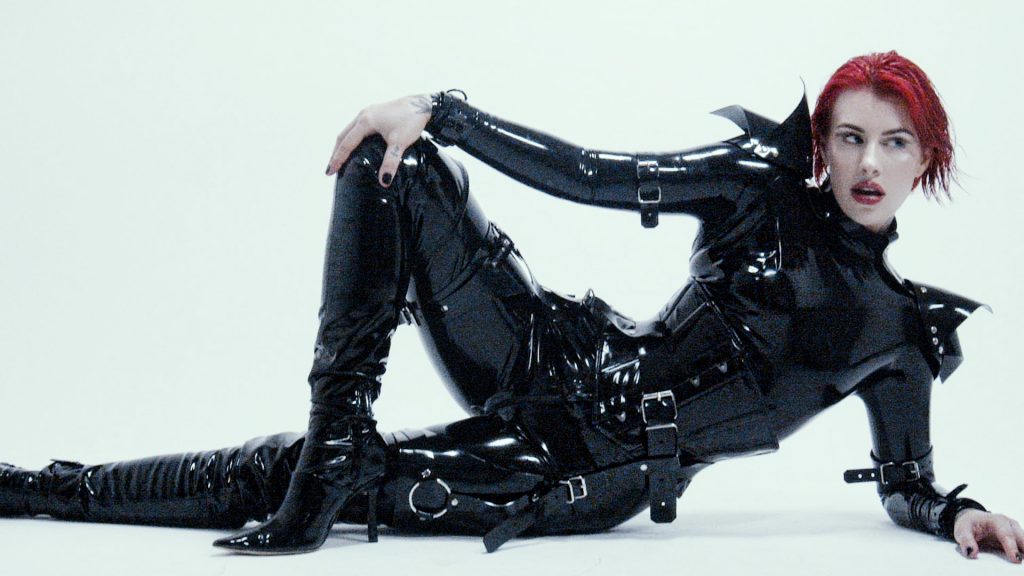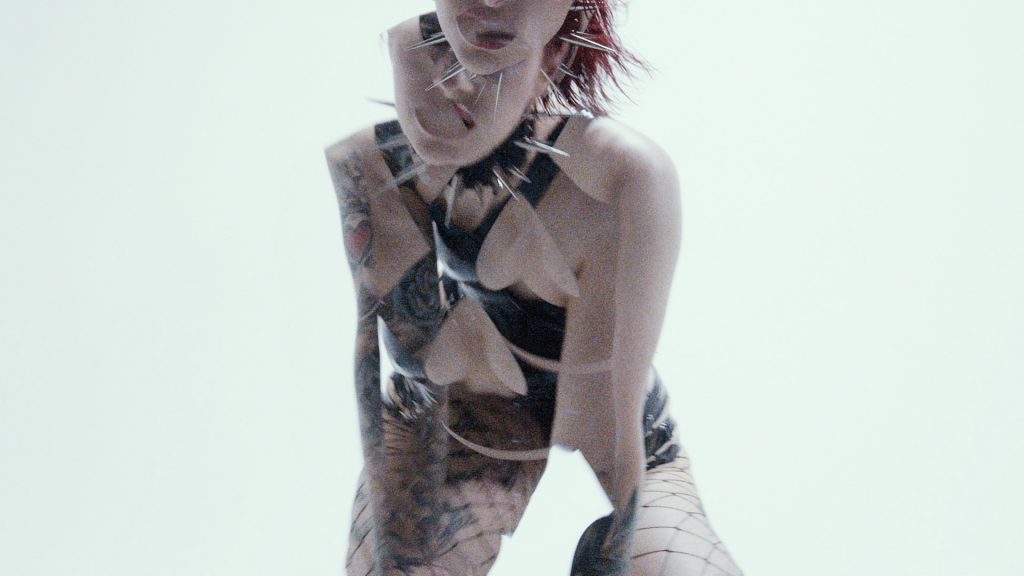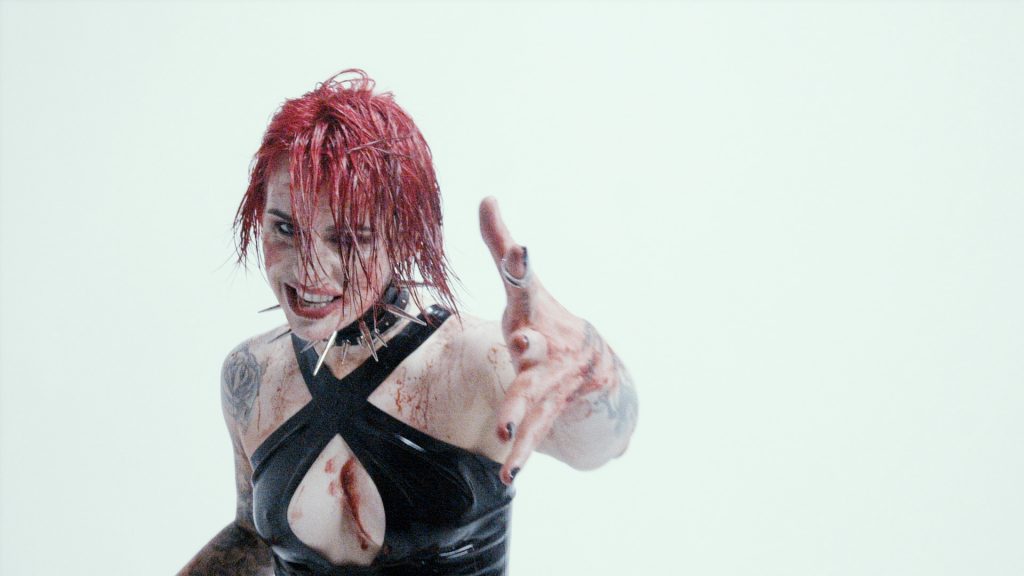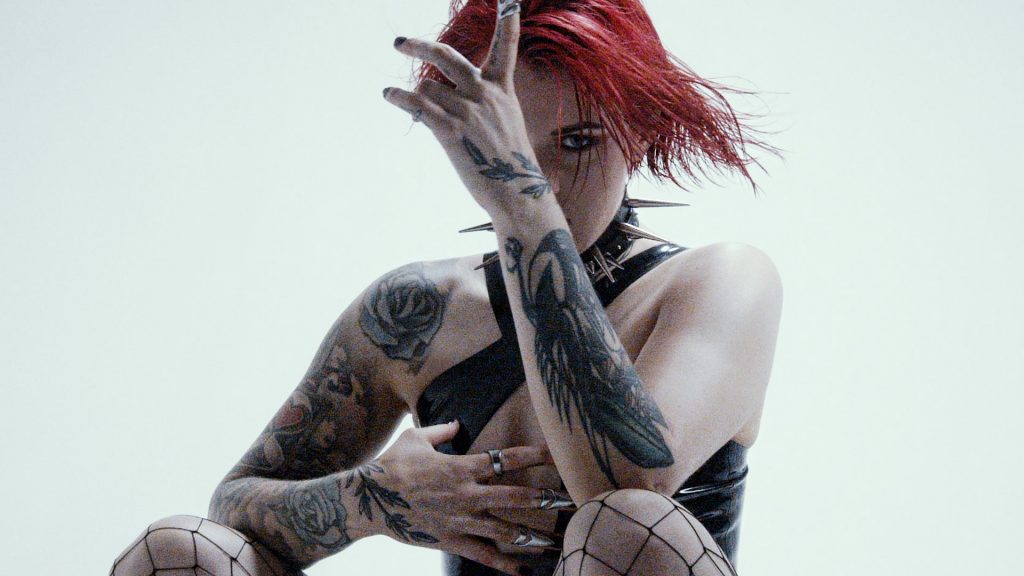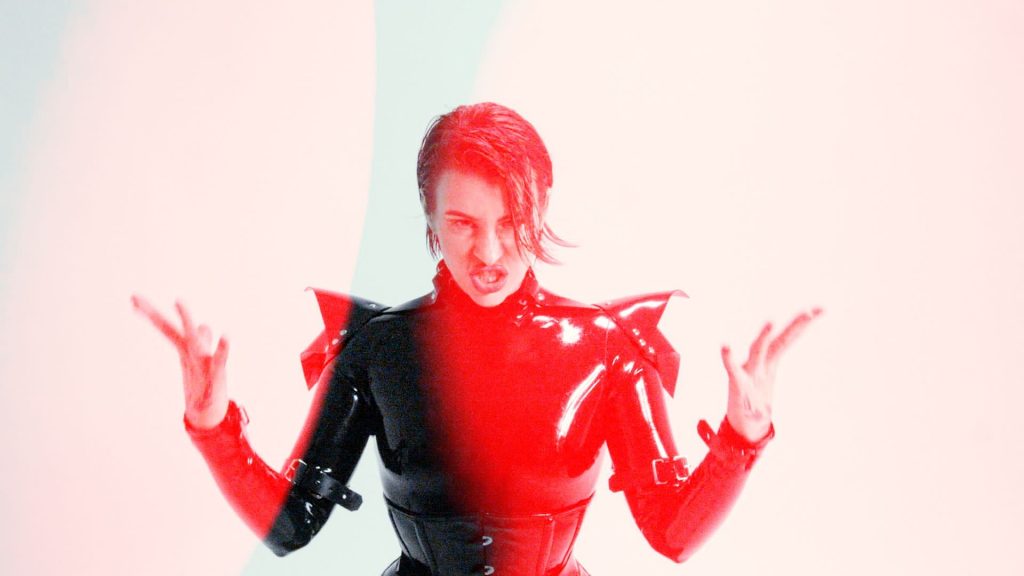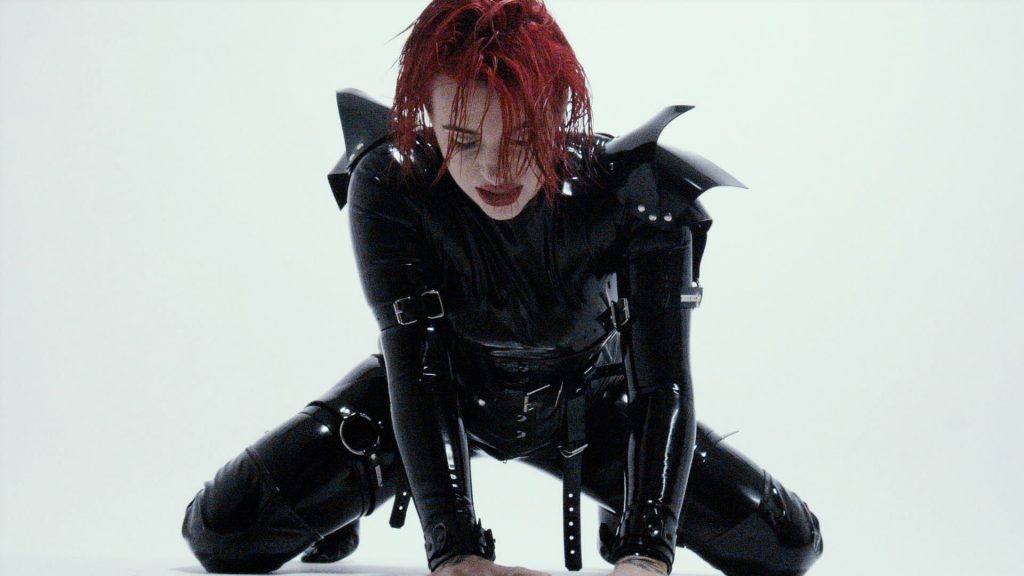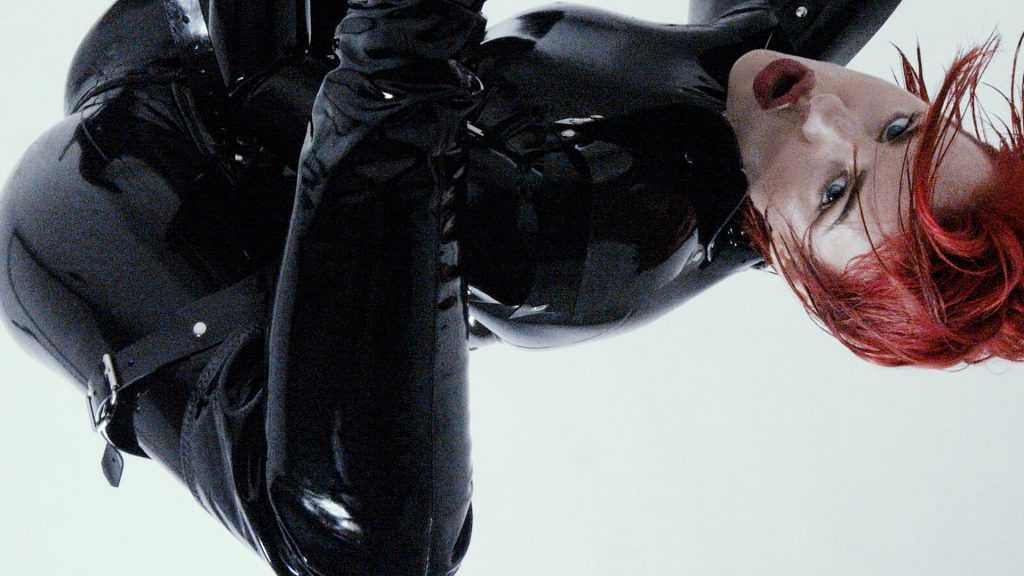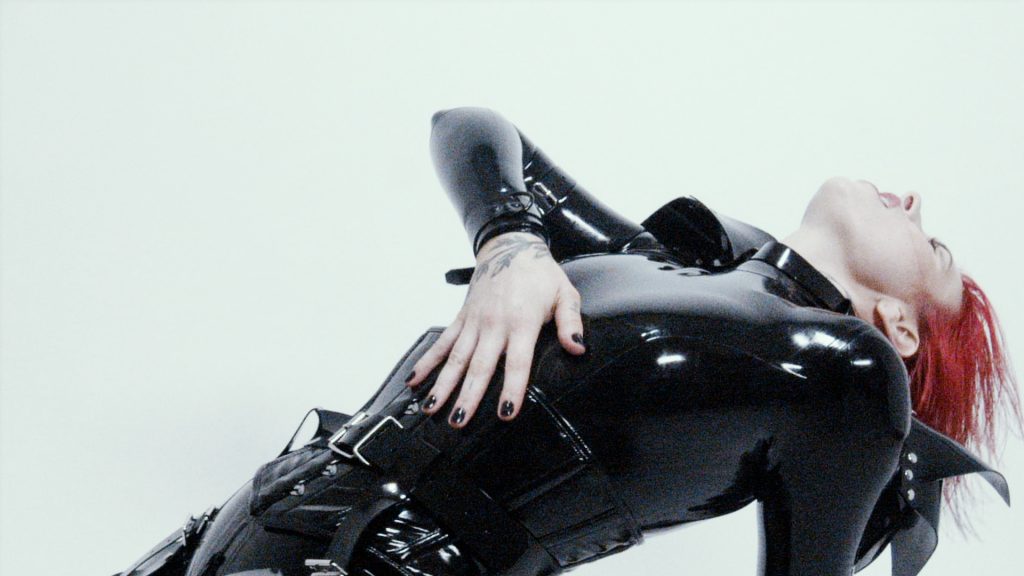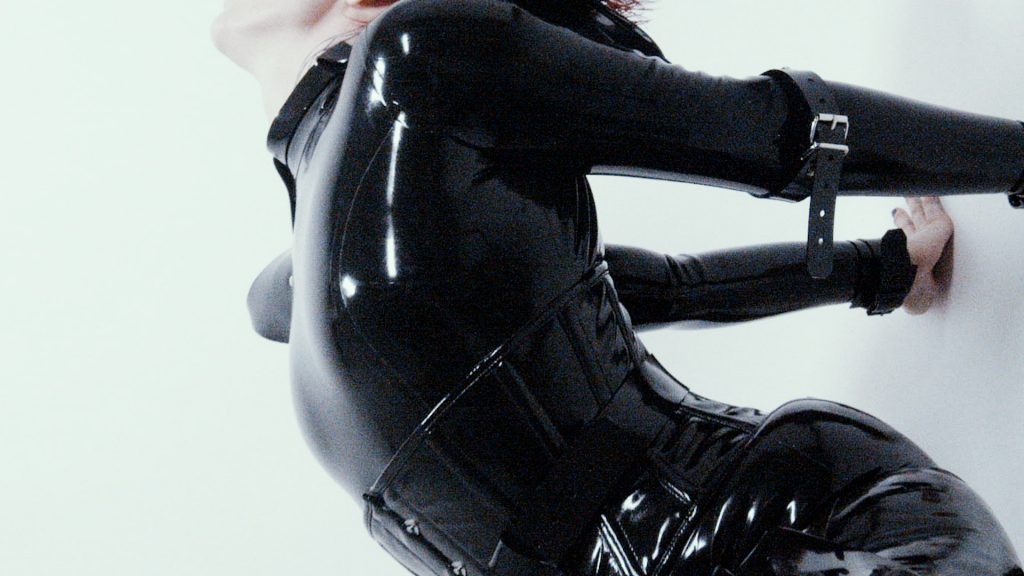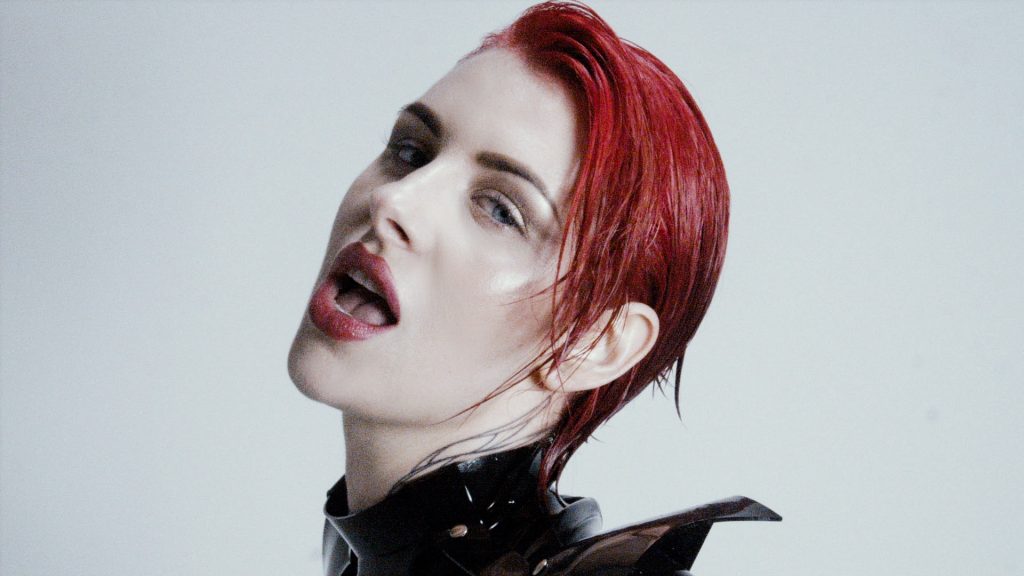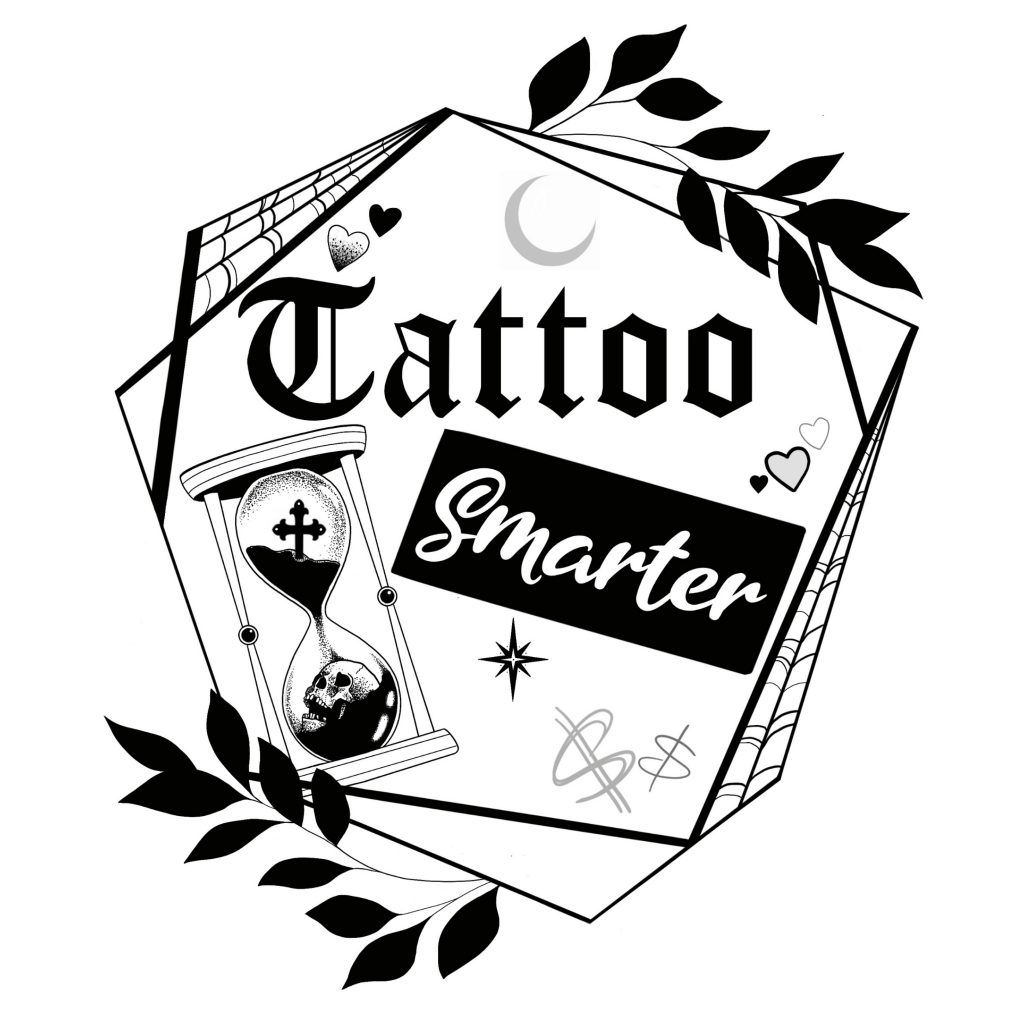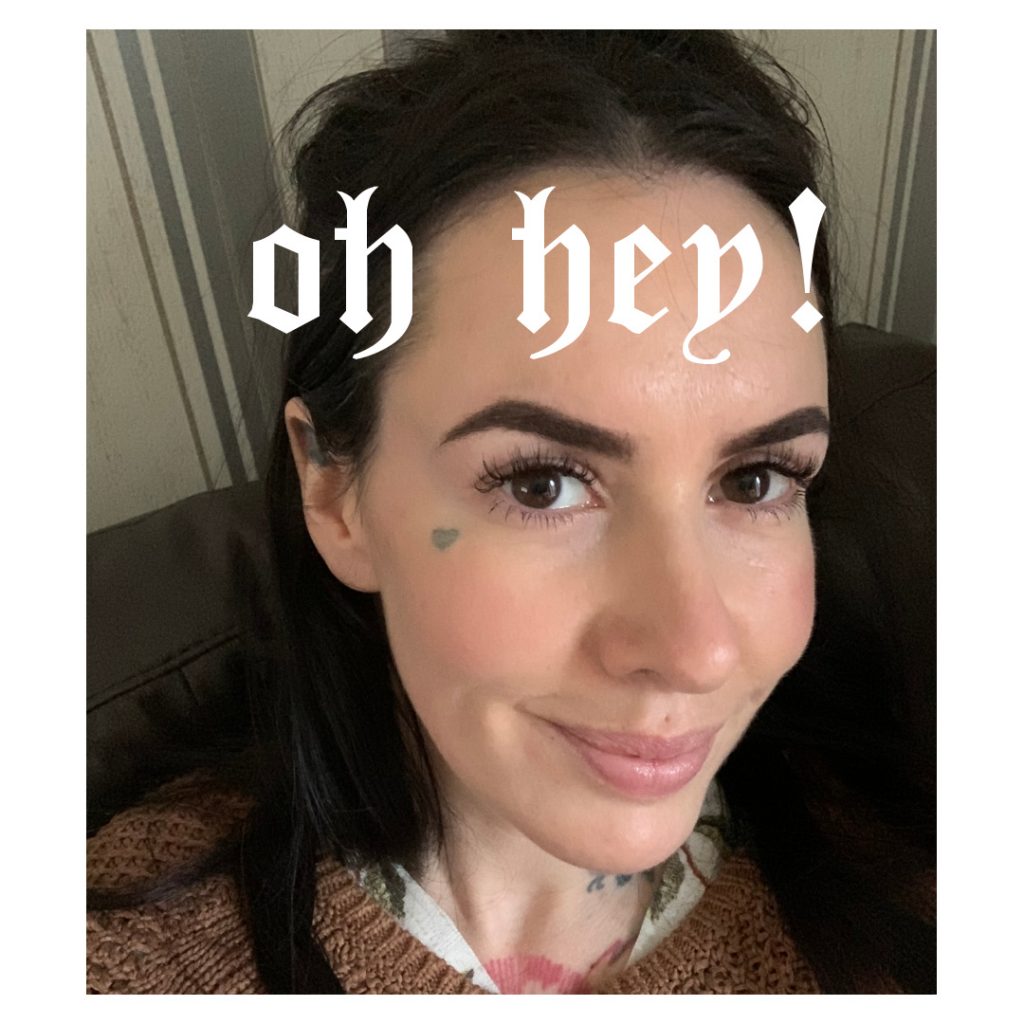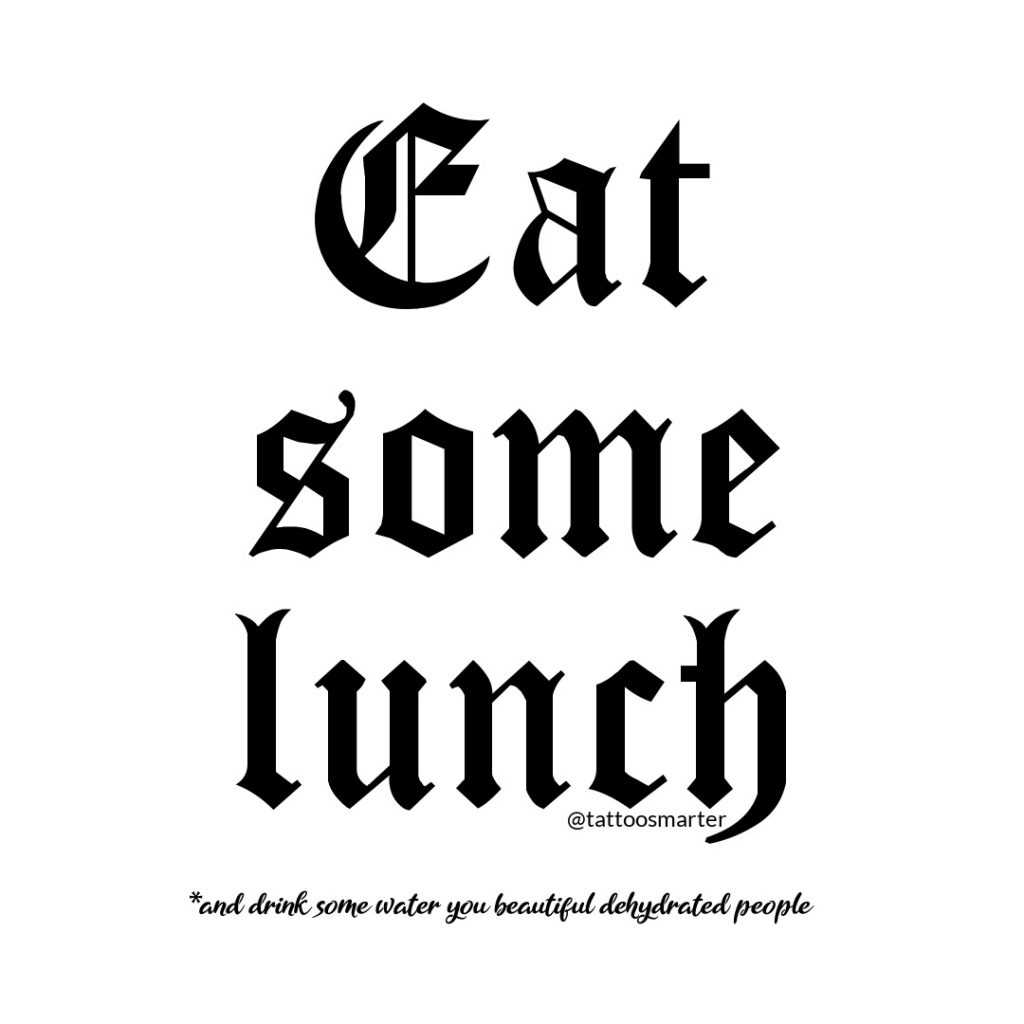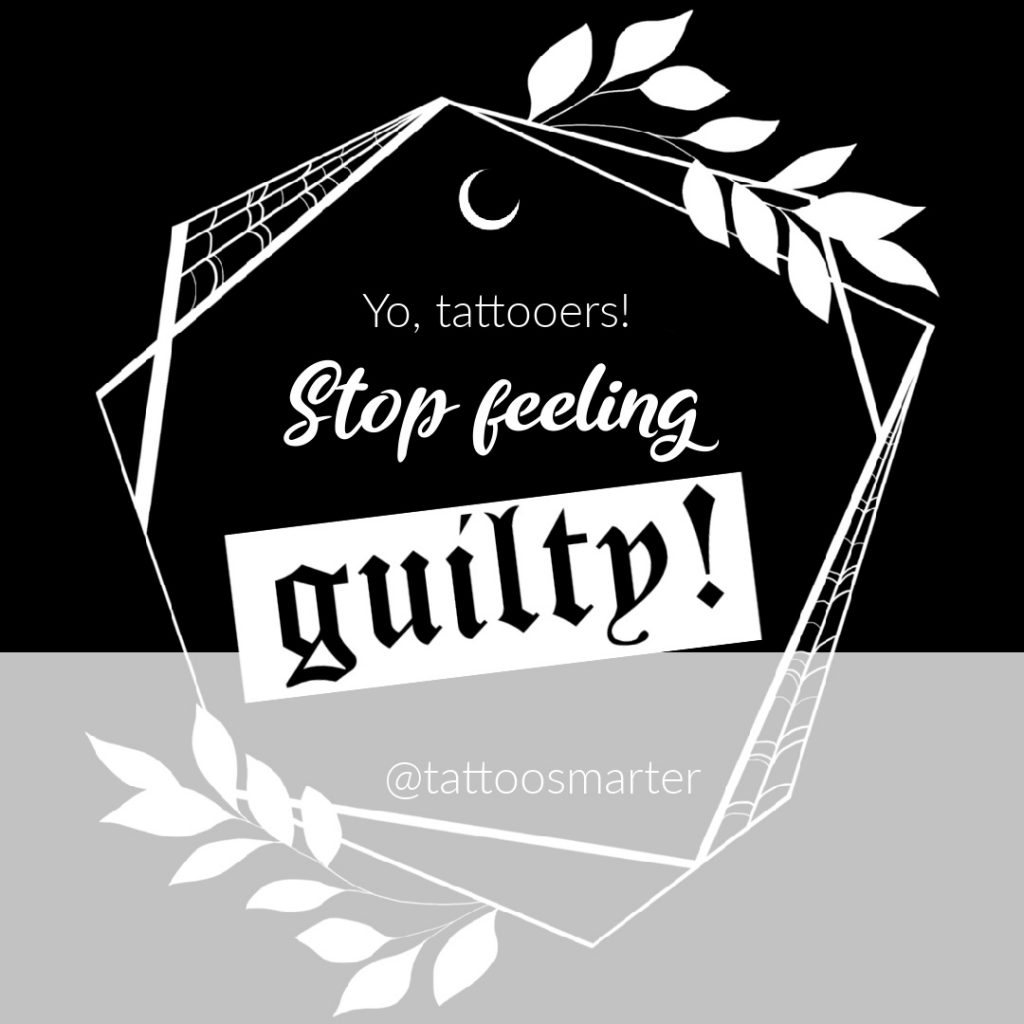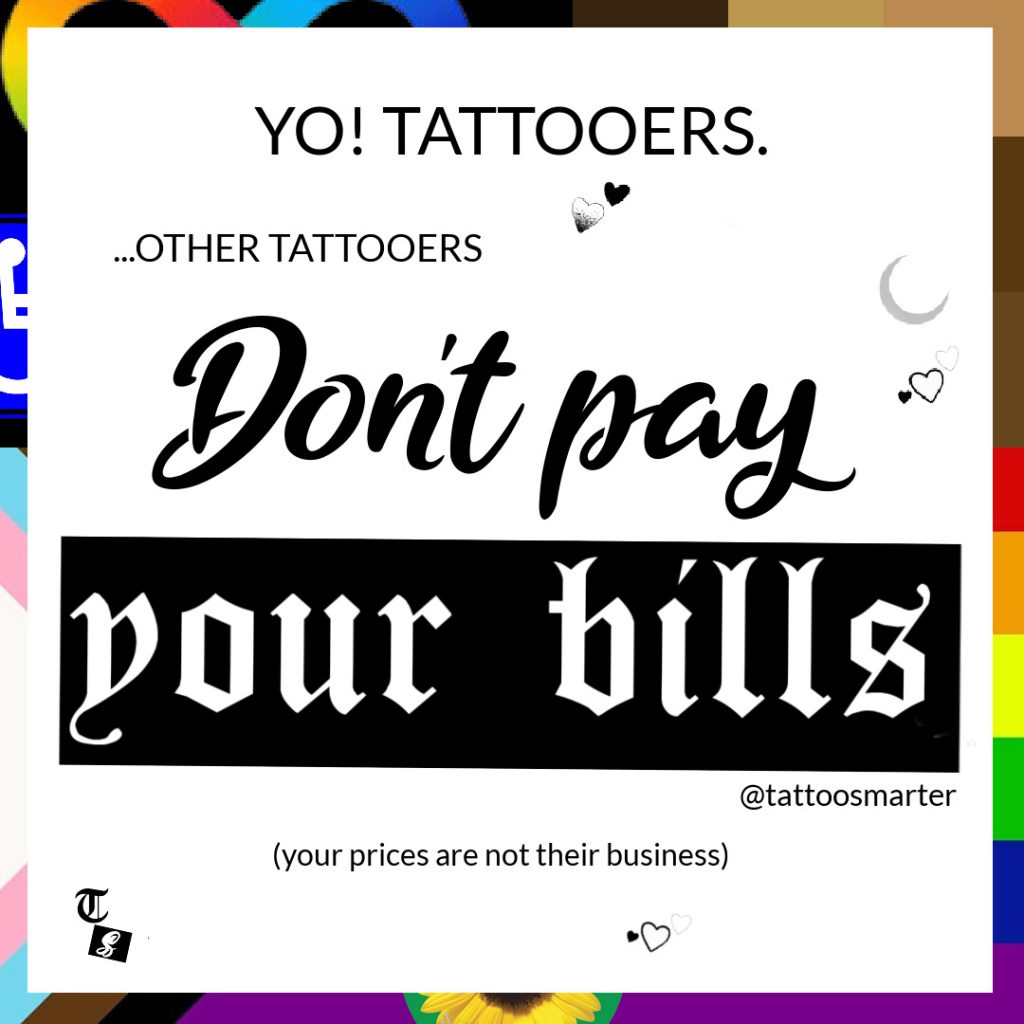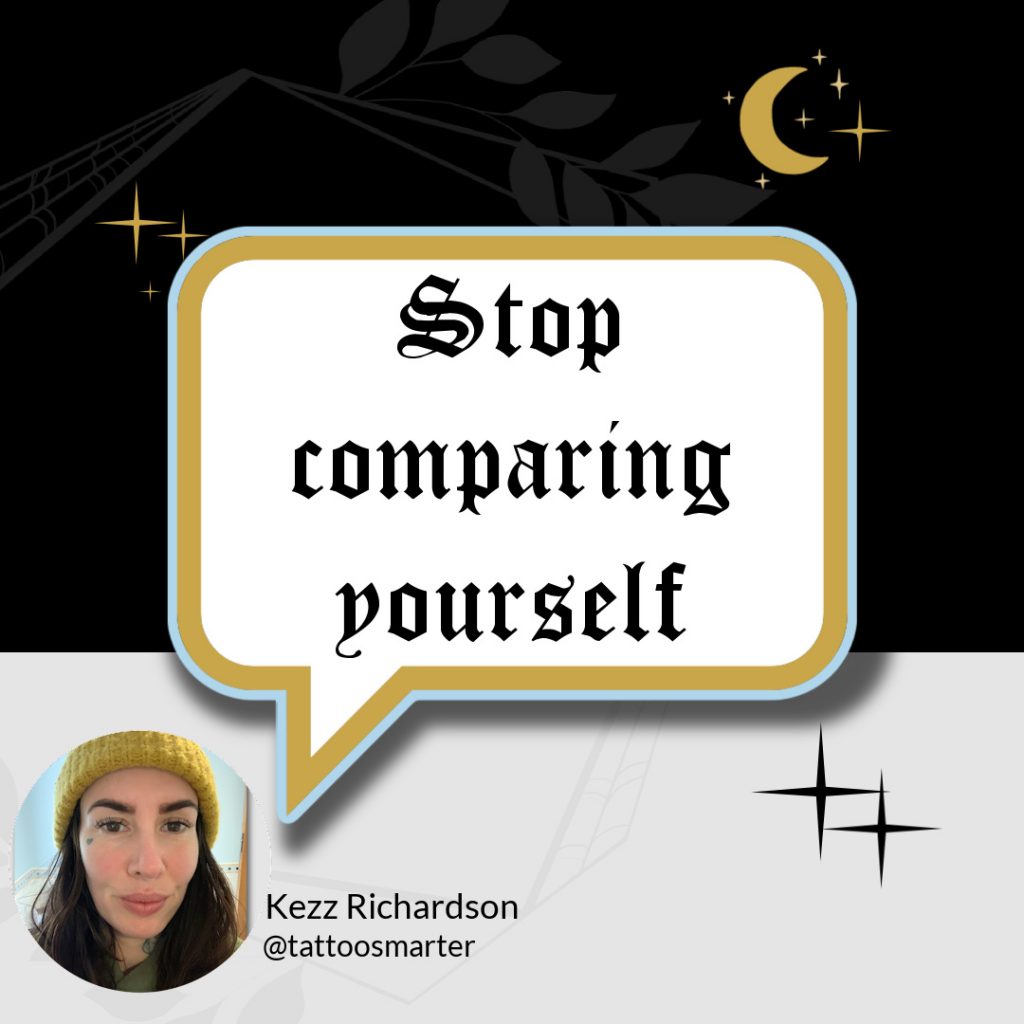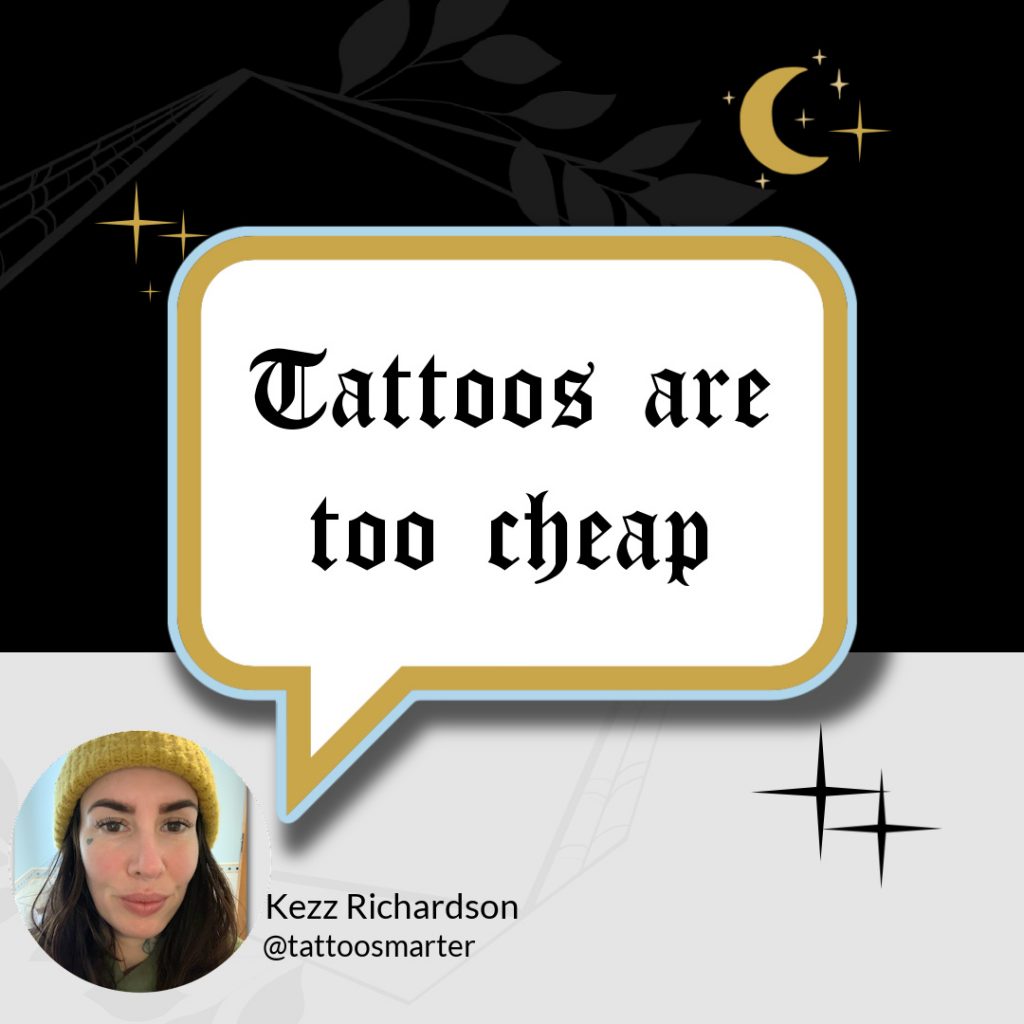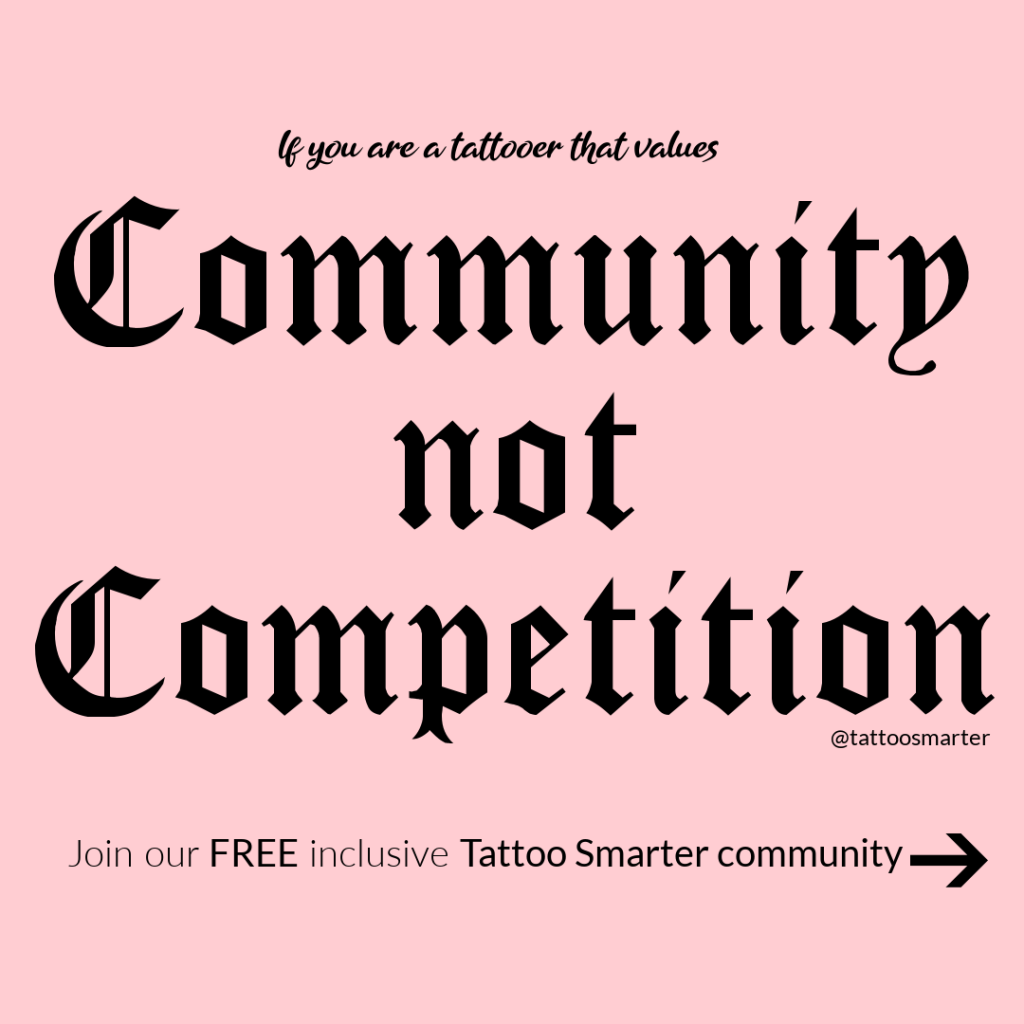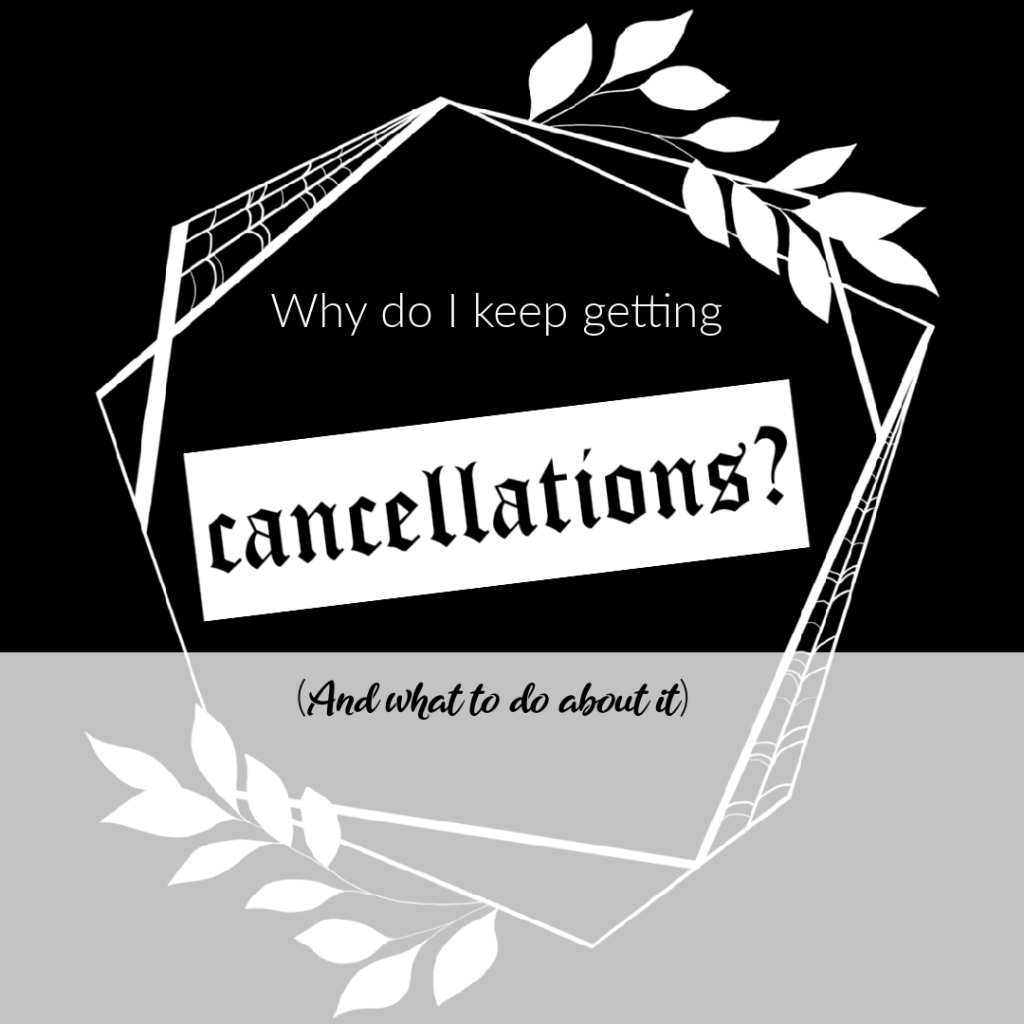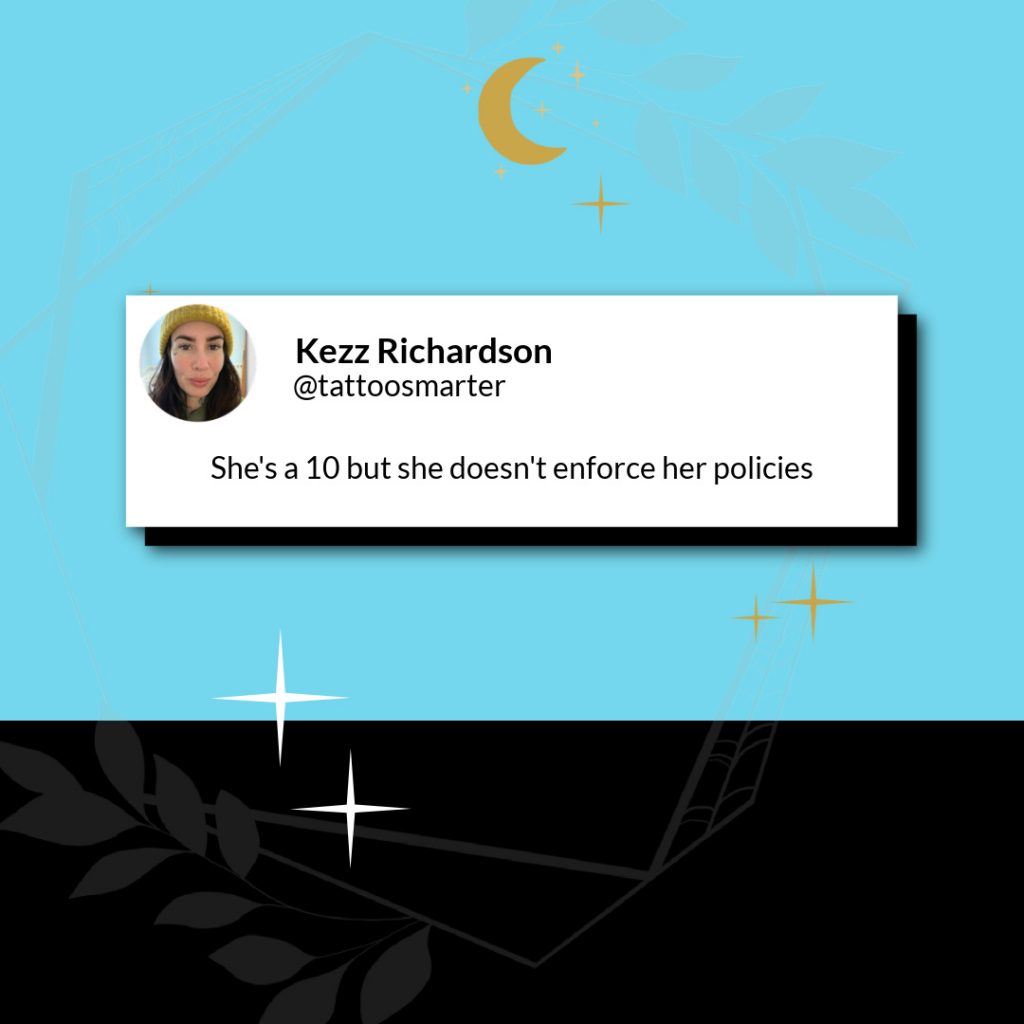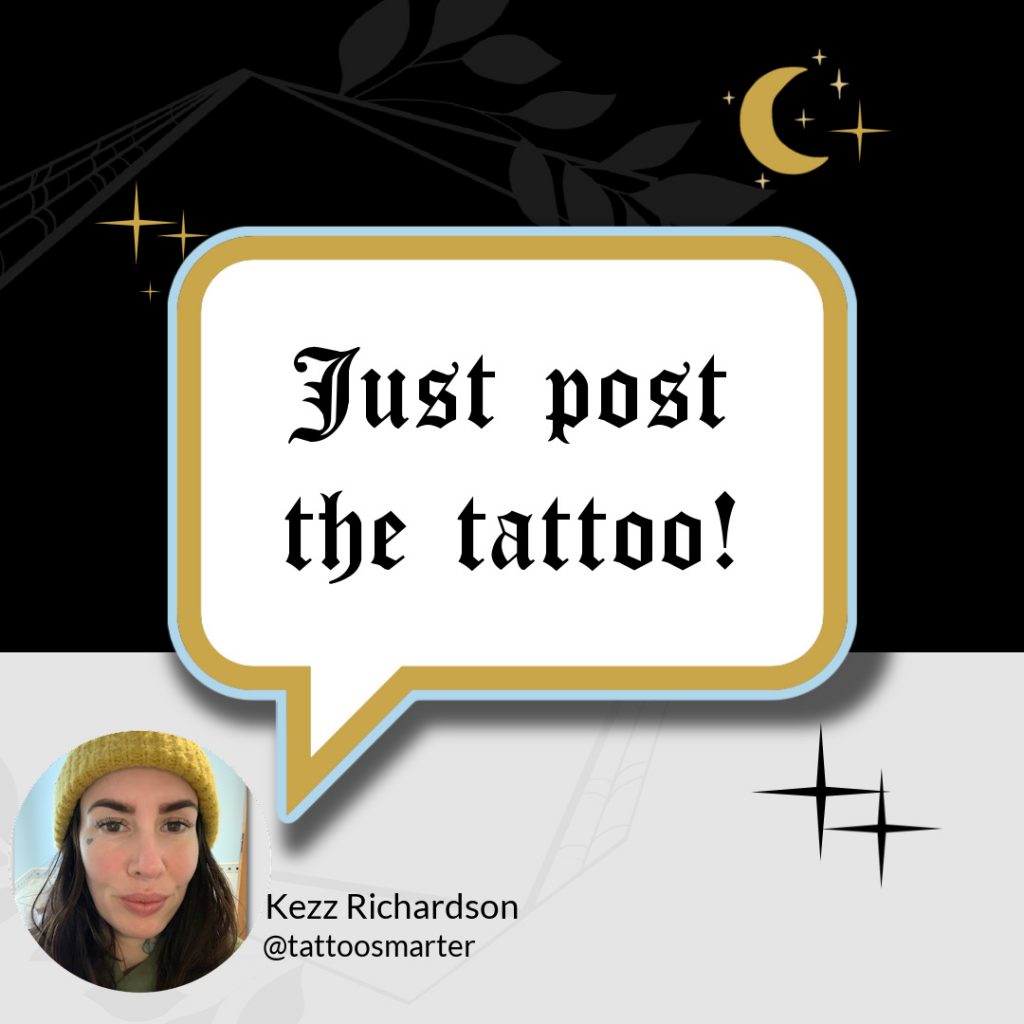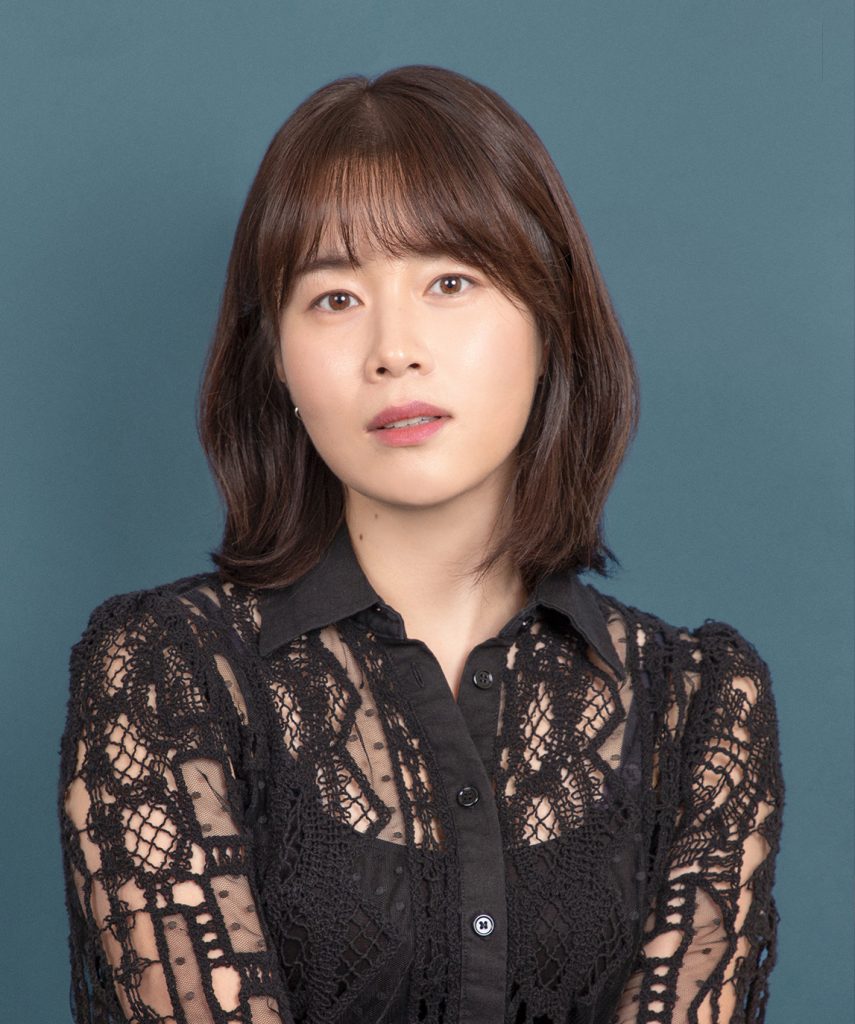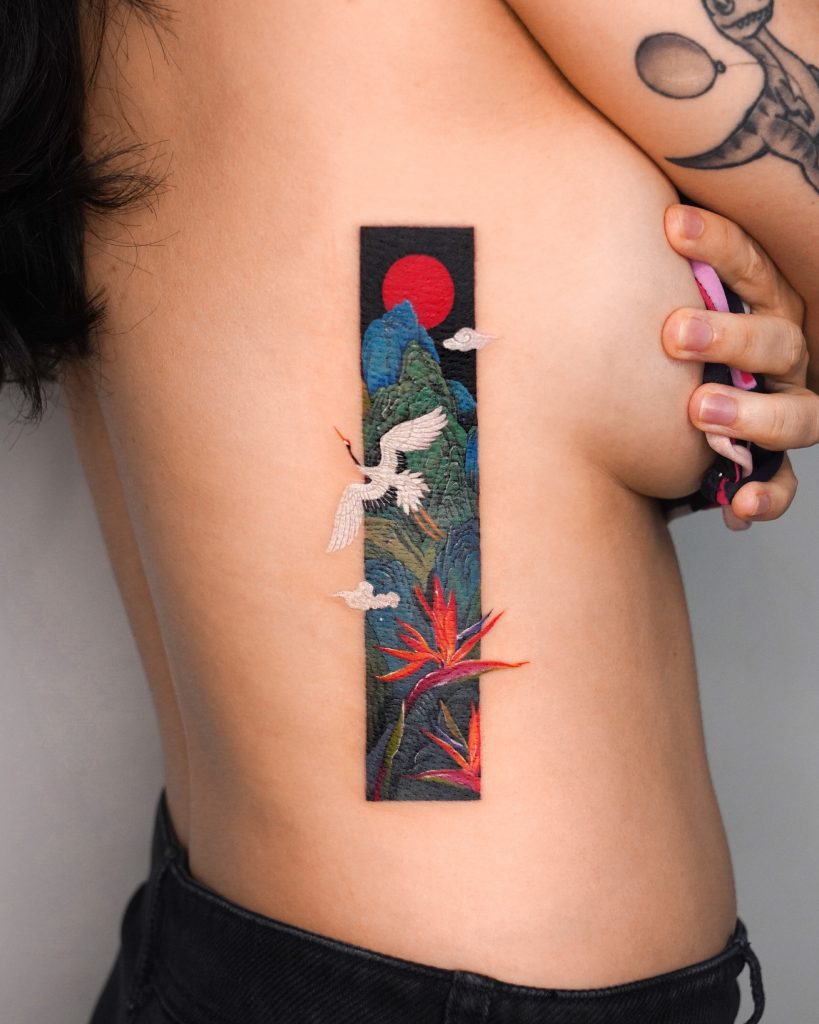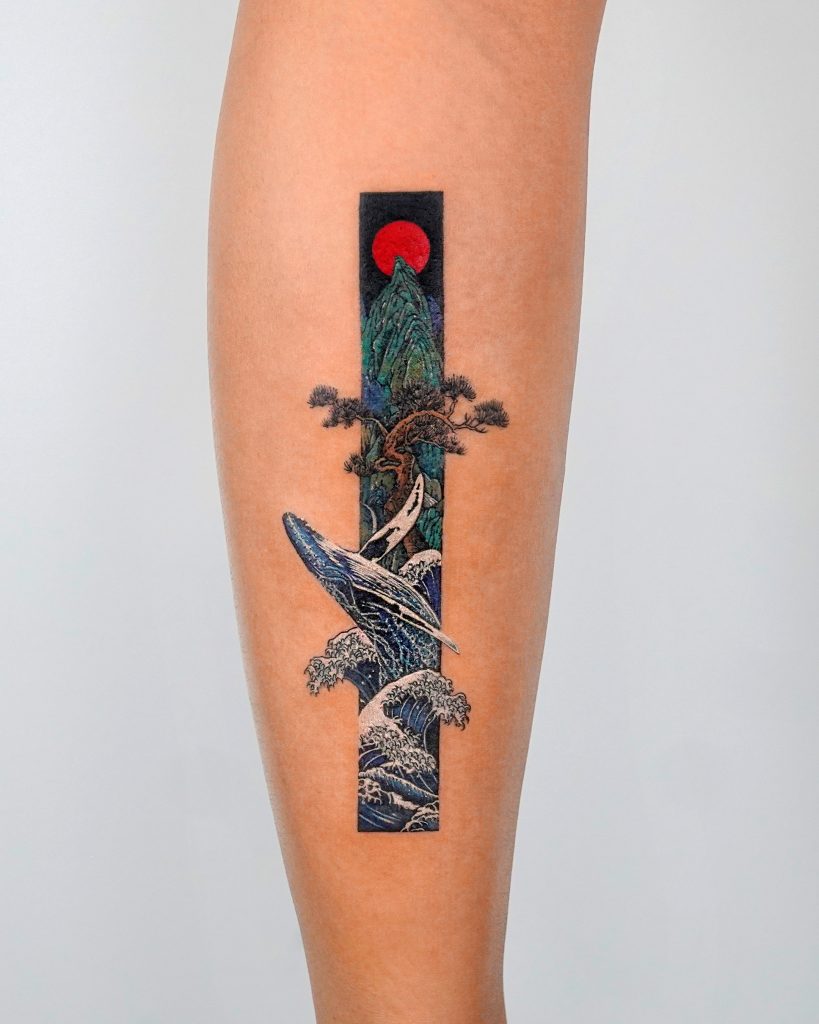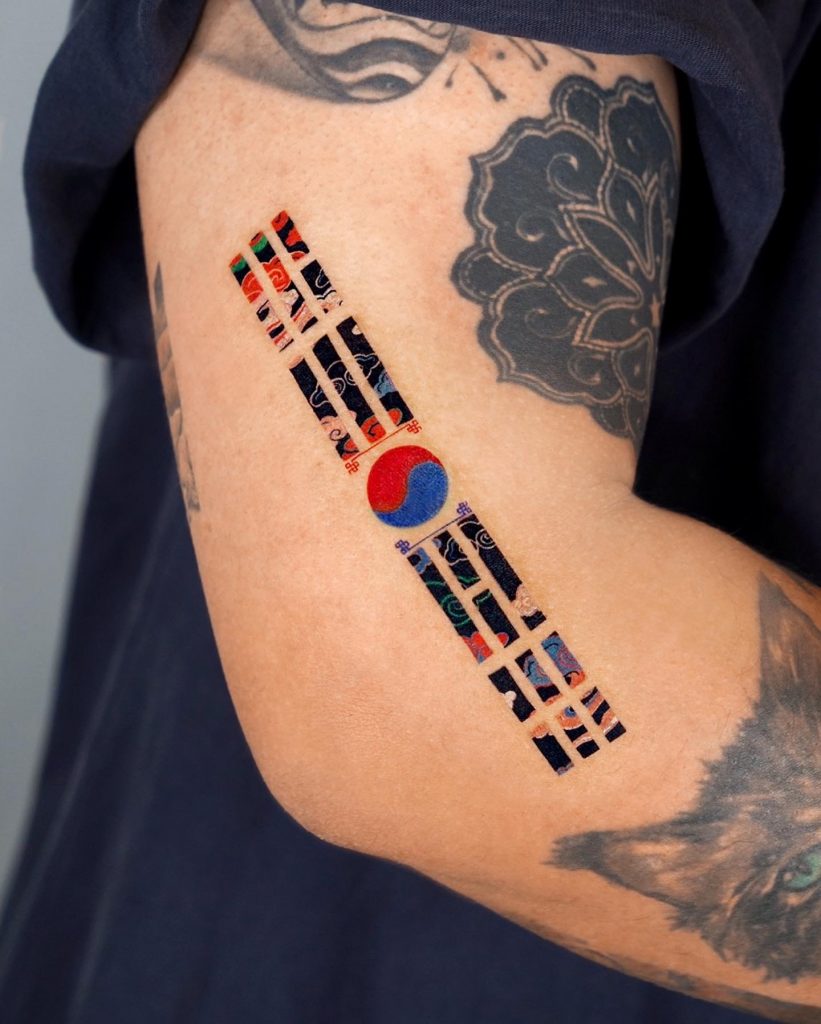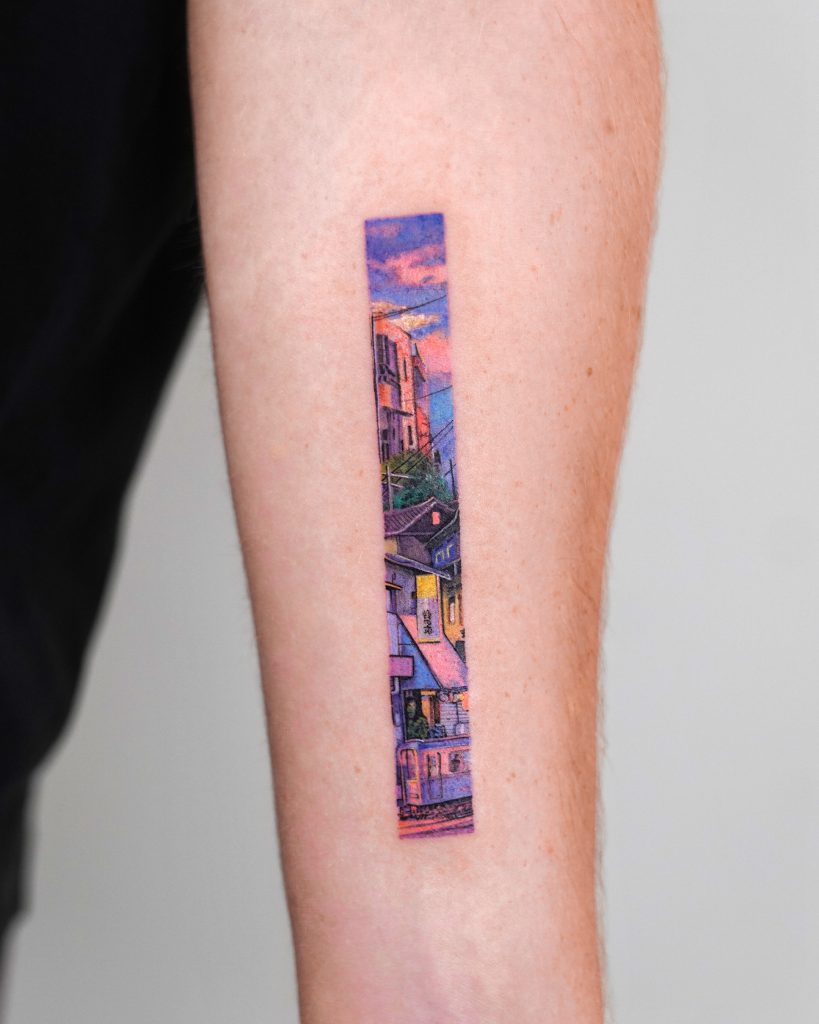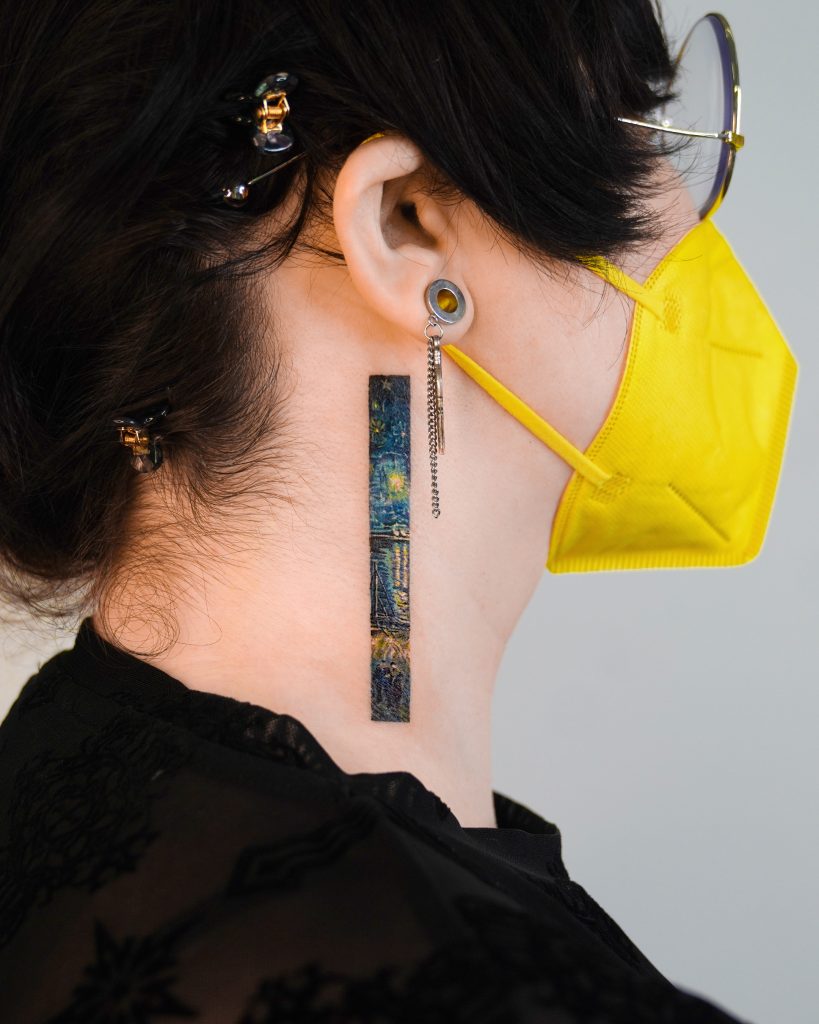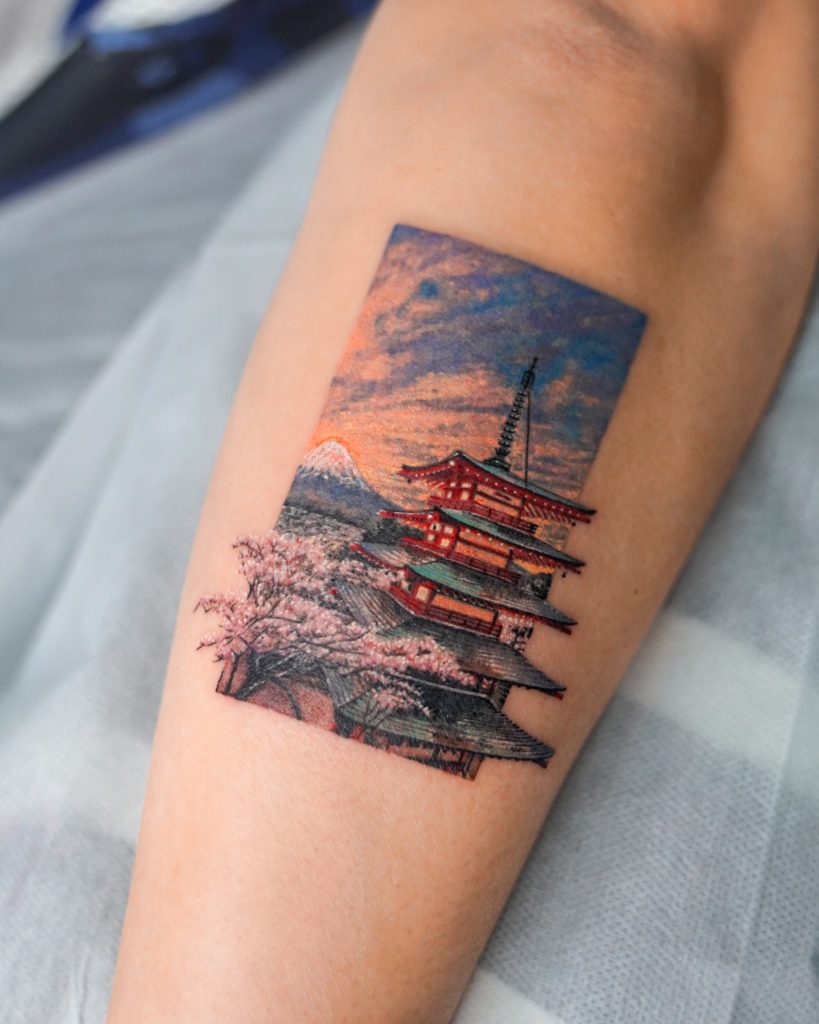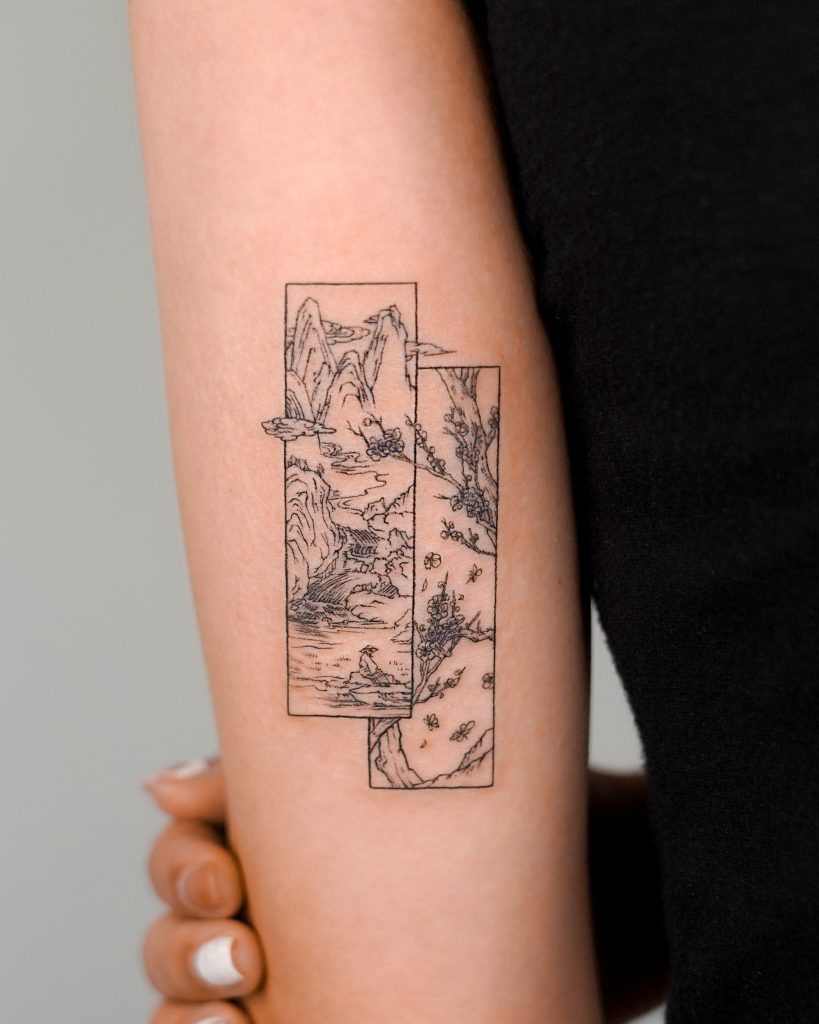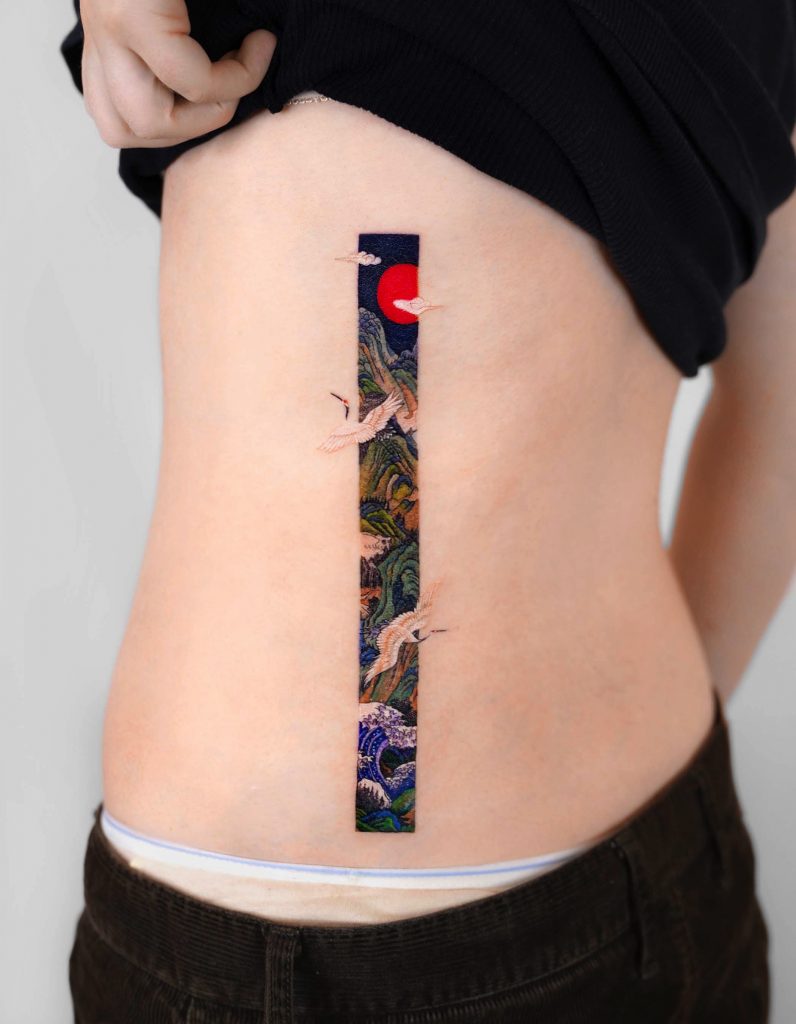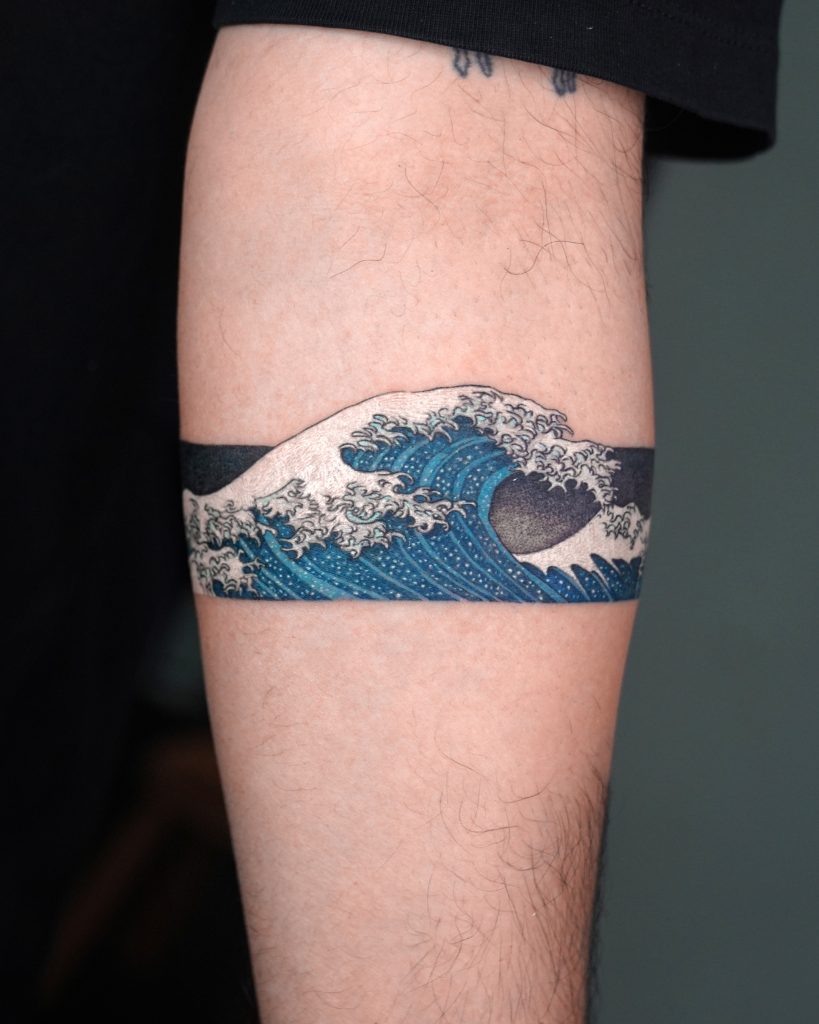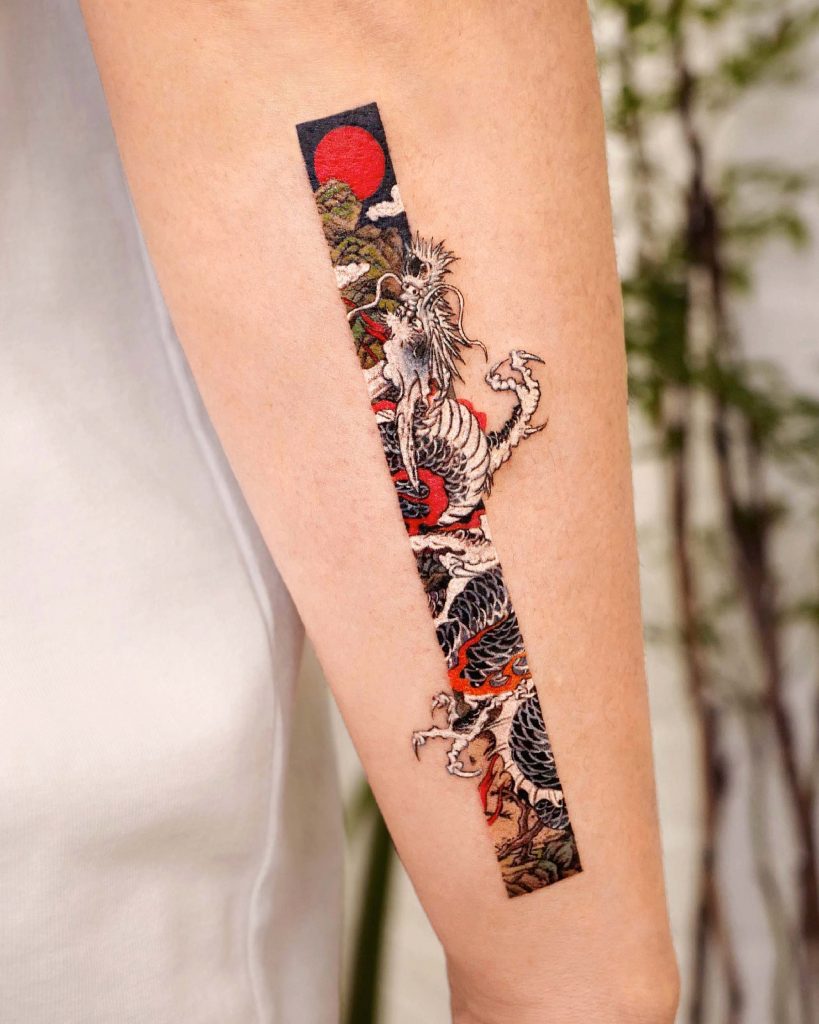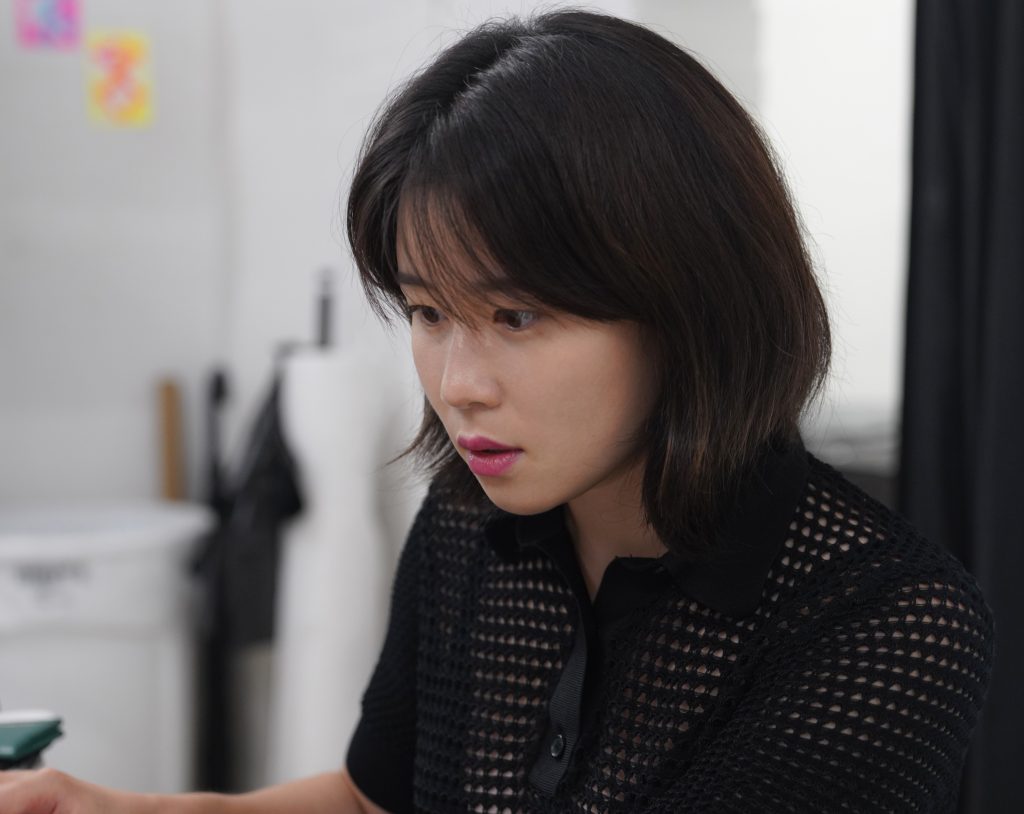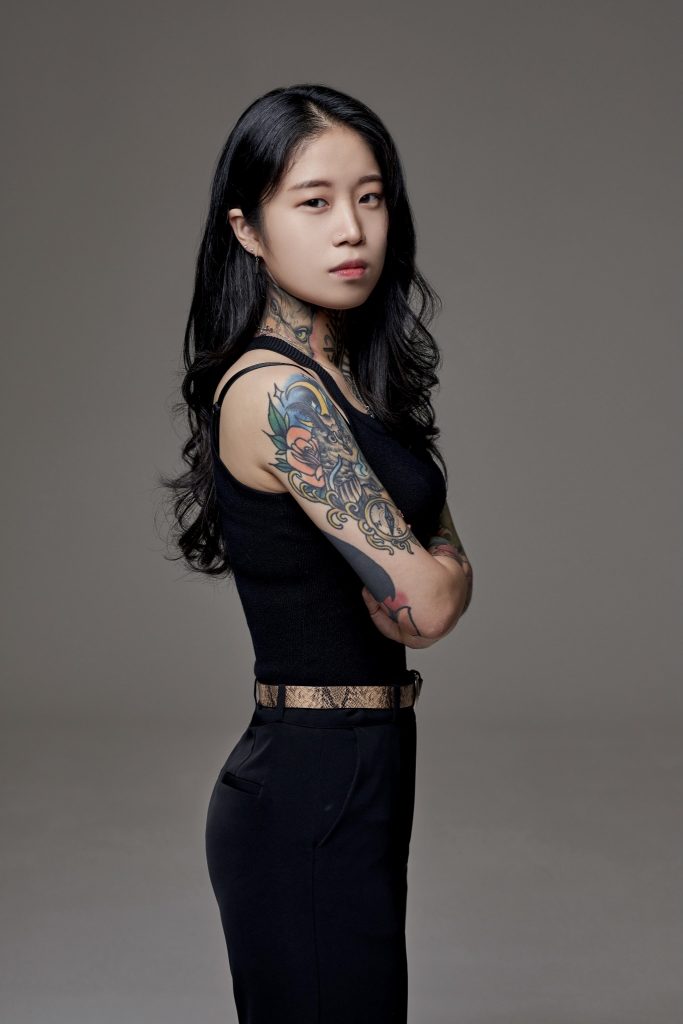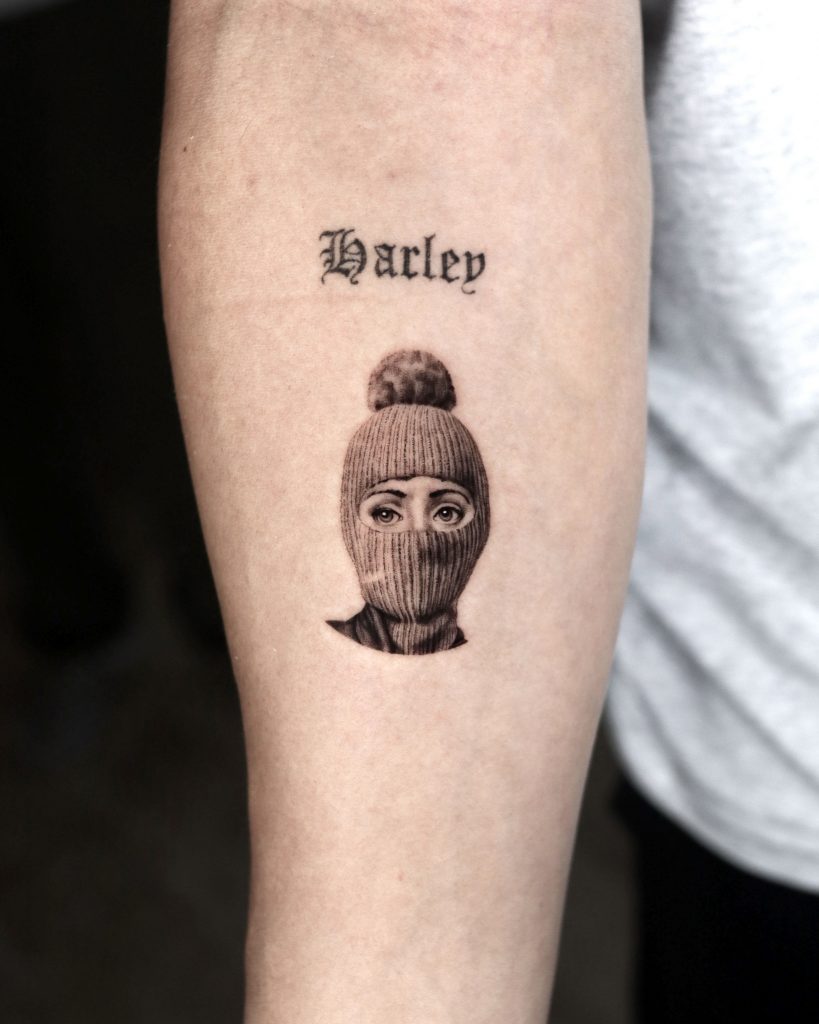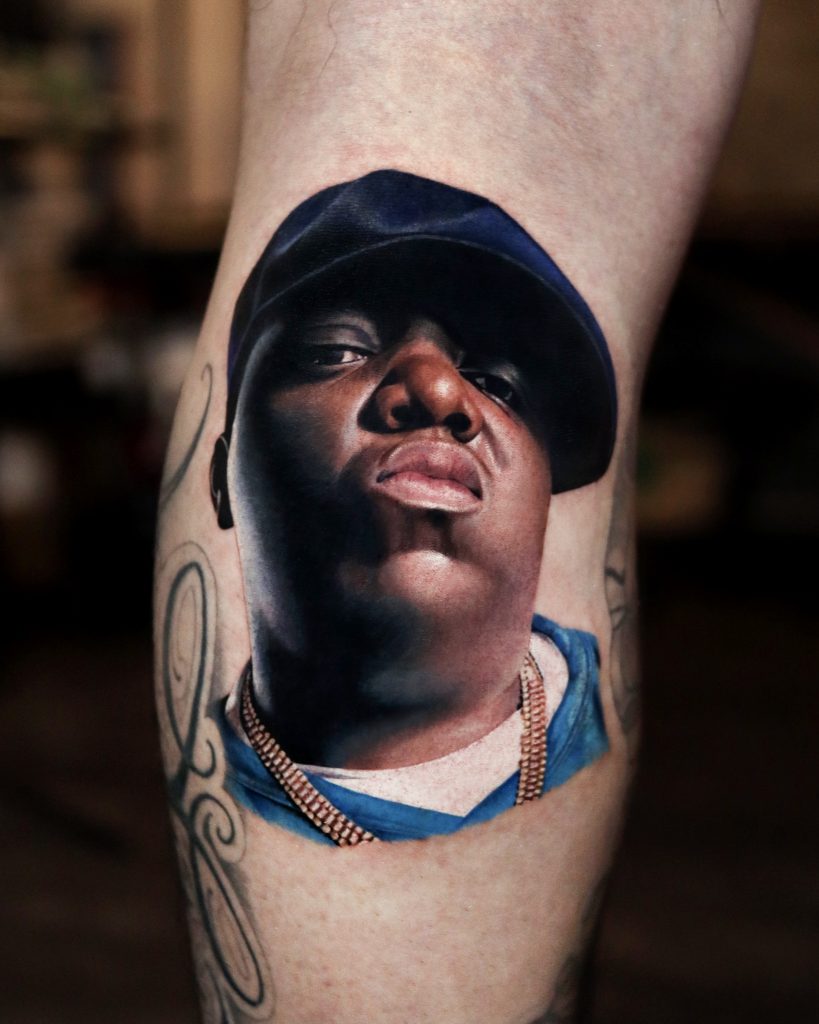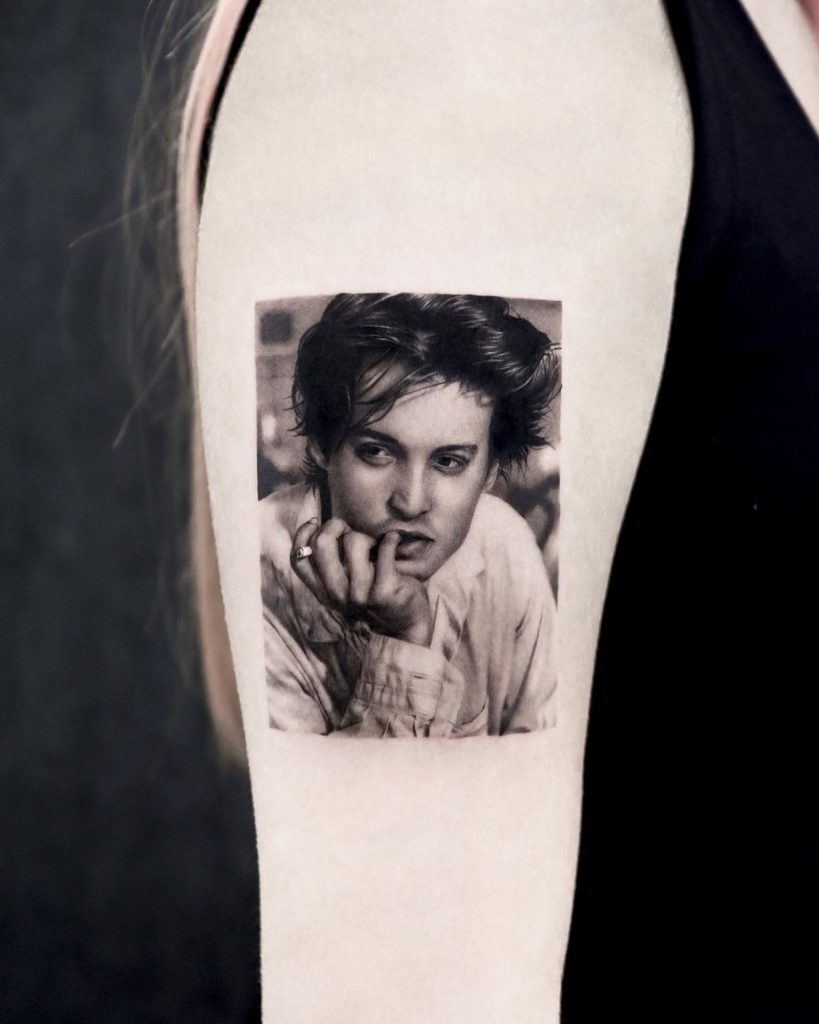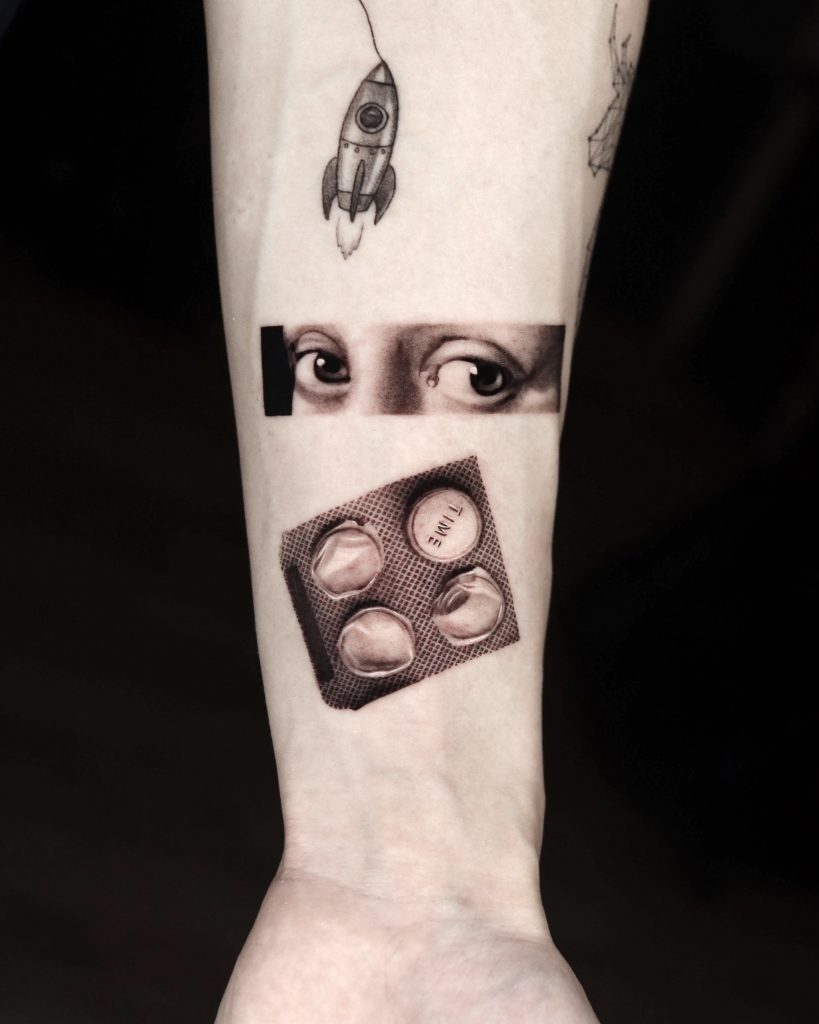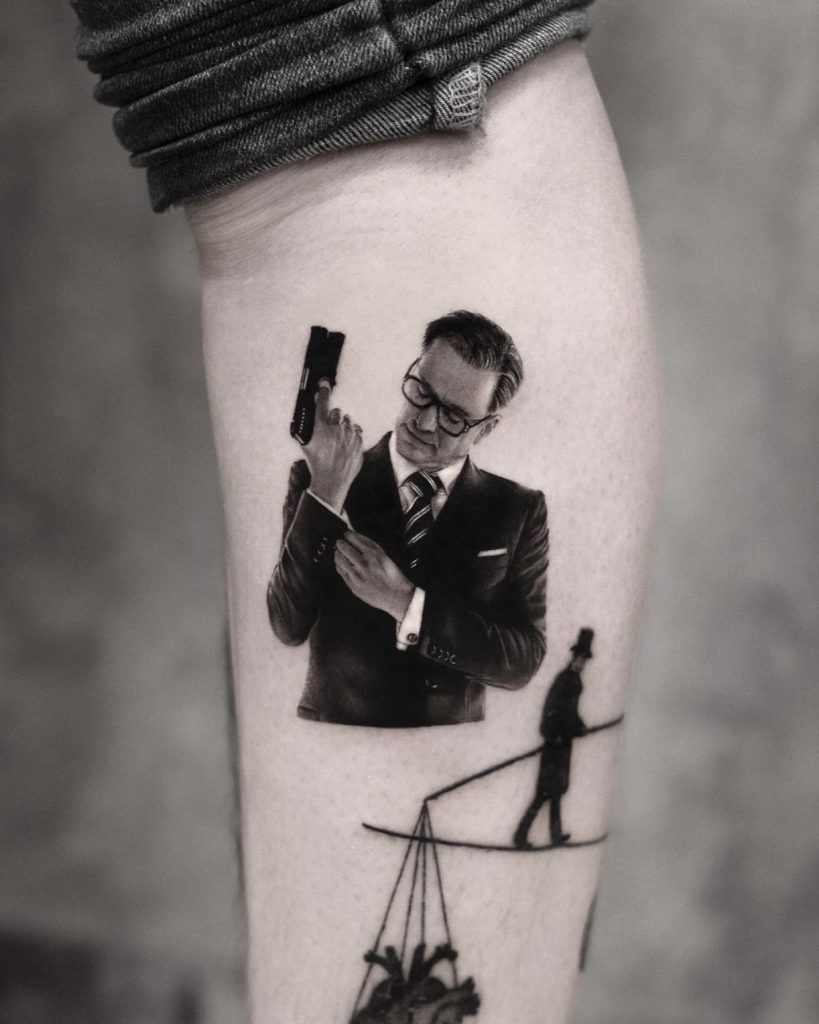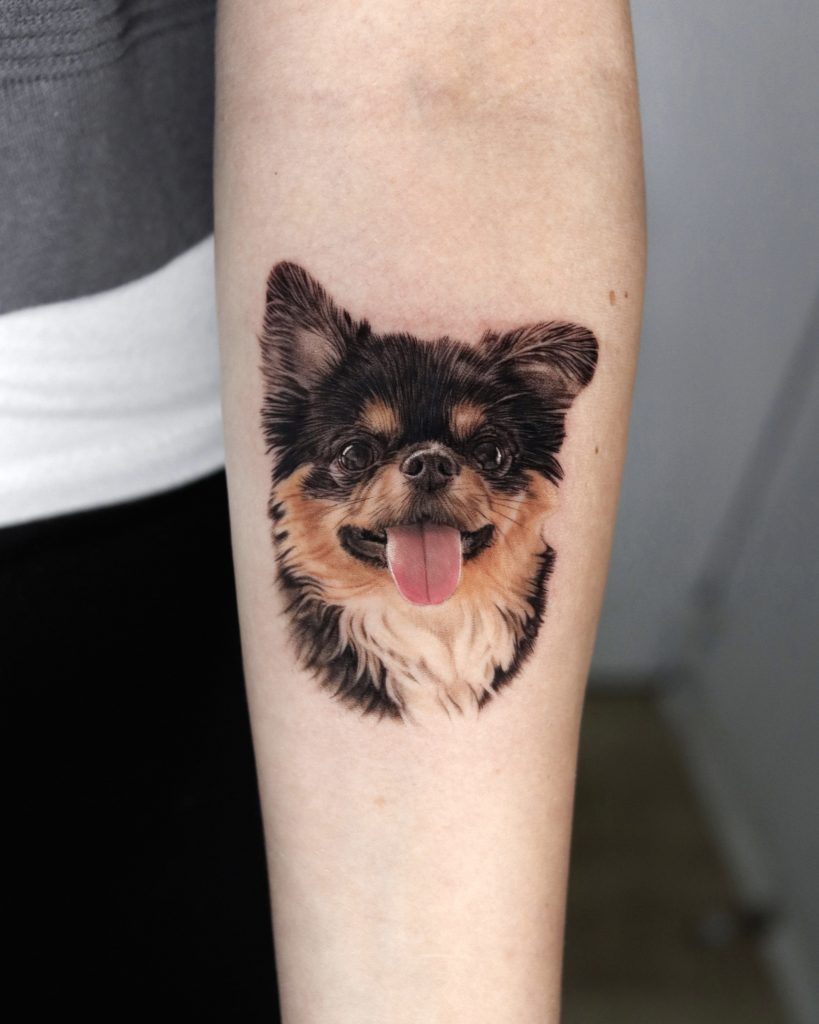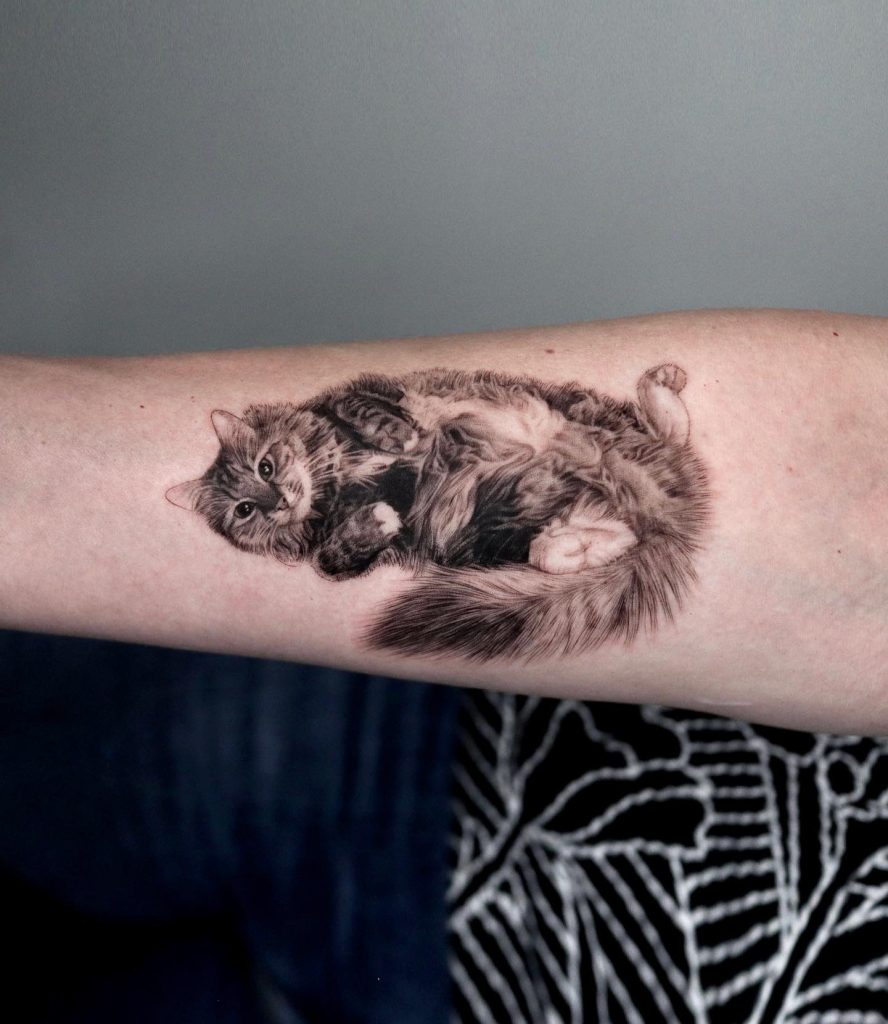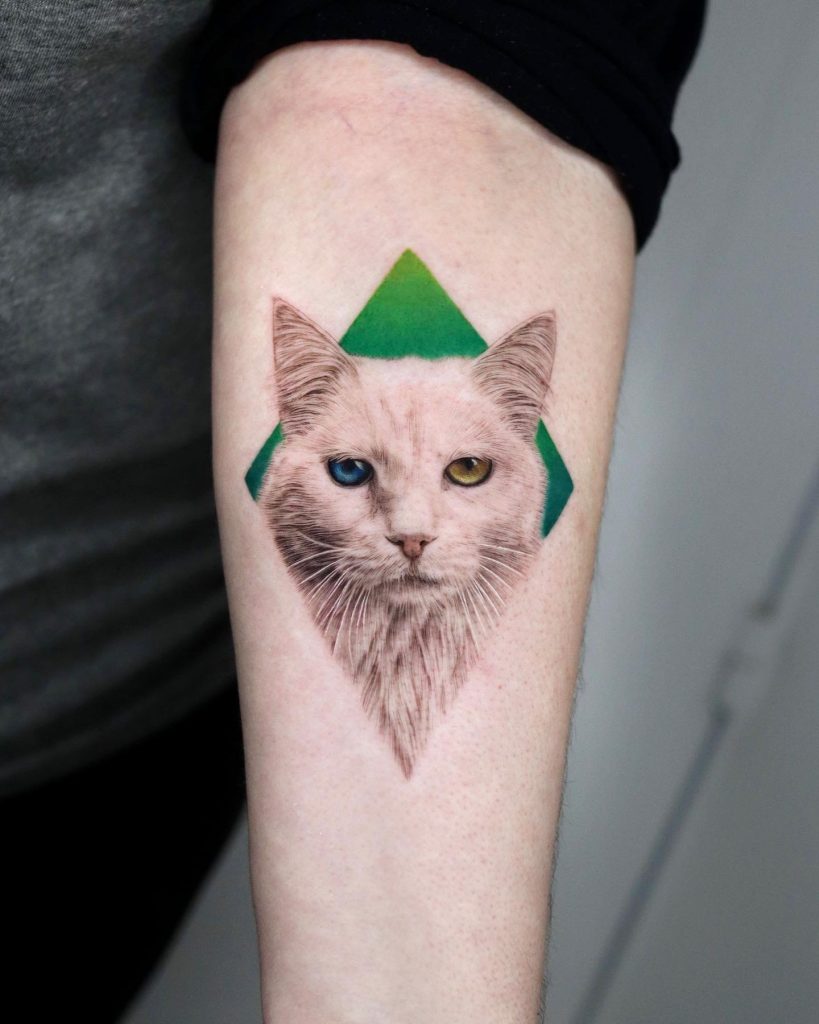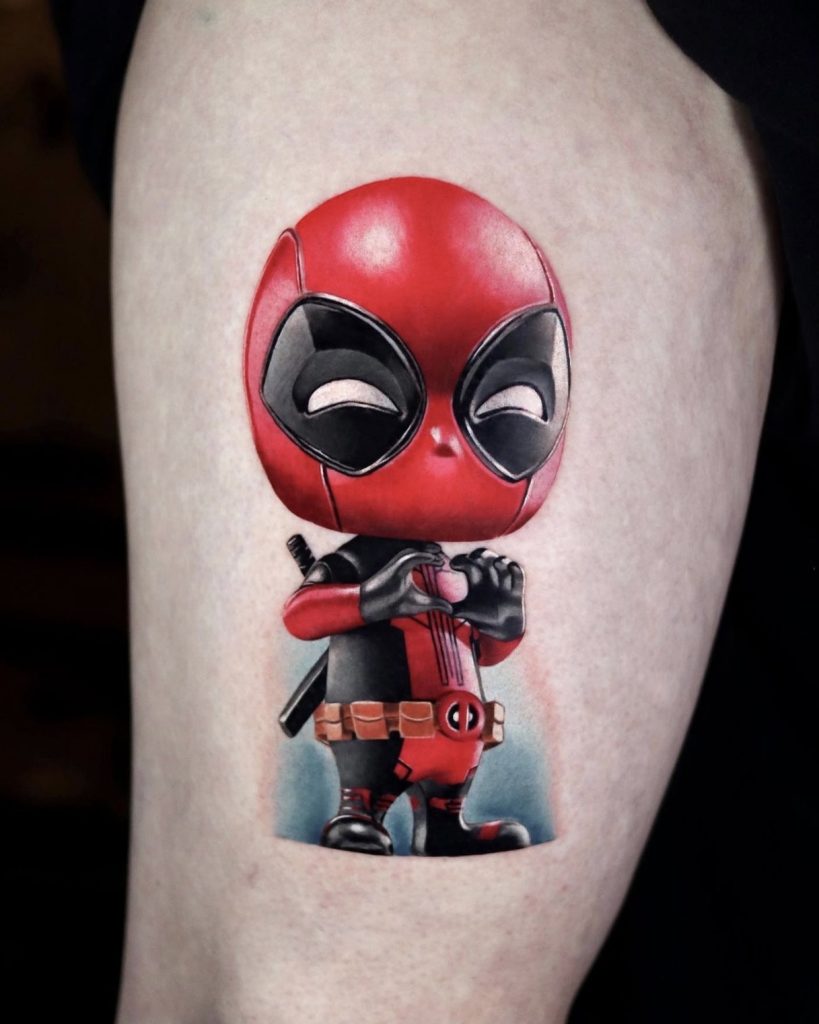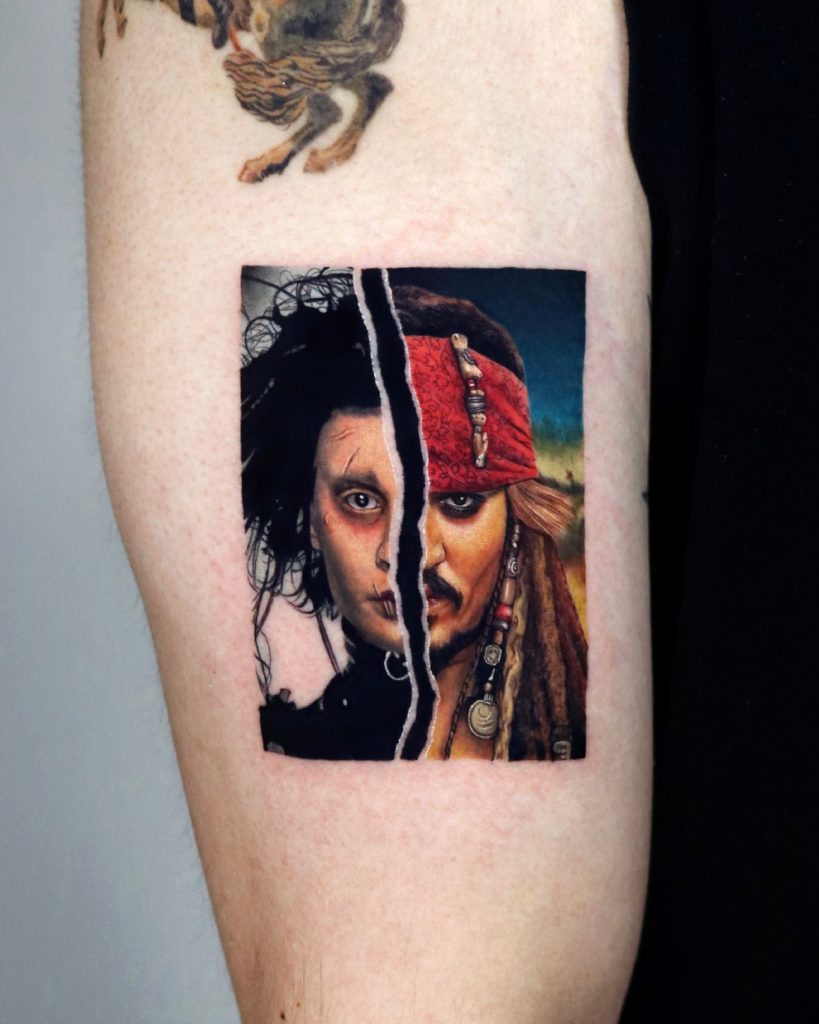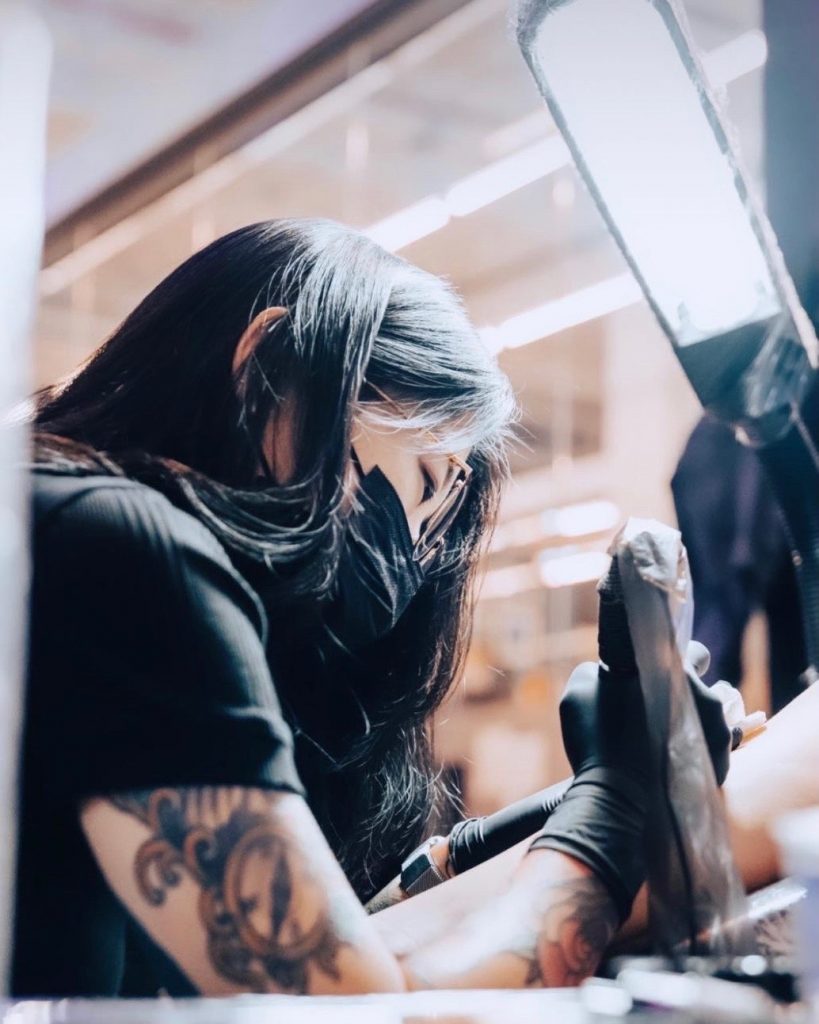We love the cosy handpoke tattoos Poppy creates at The Blackhouse Club, Brighton and K-ink, London so much so that we had to find out more about the artist behind them. We chat to Poppy about their journey into the tattoo world, inspirations and the joy tattooing brings…
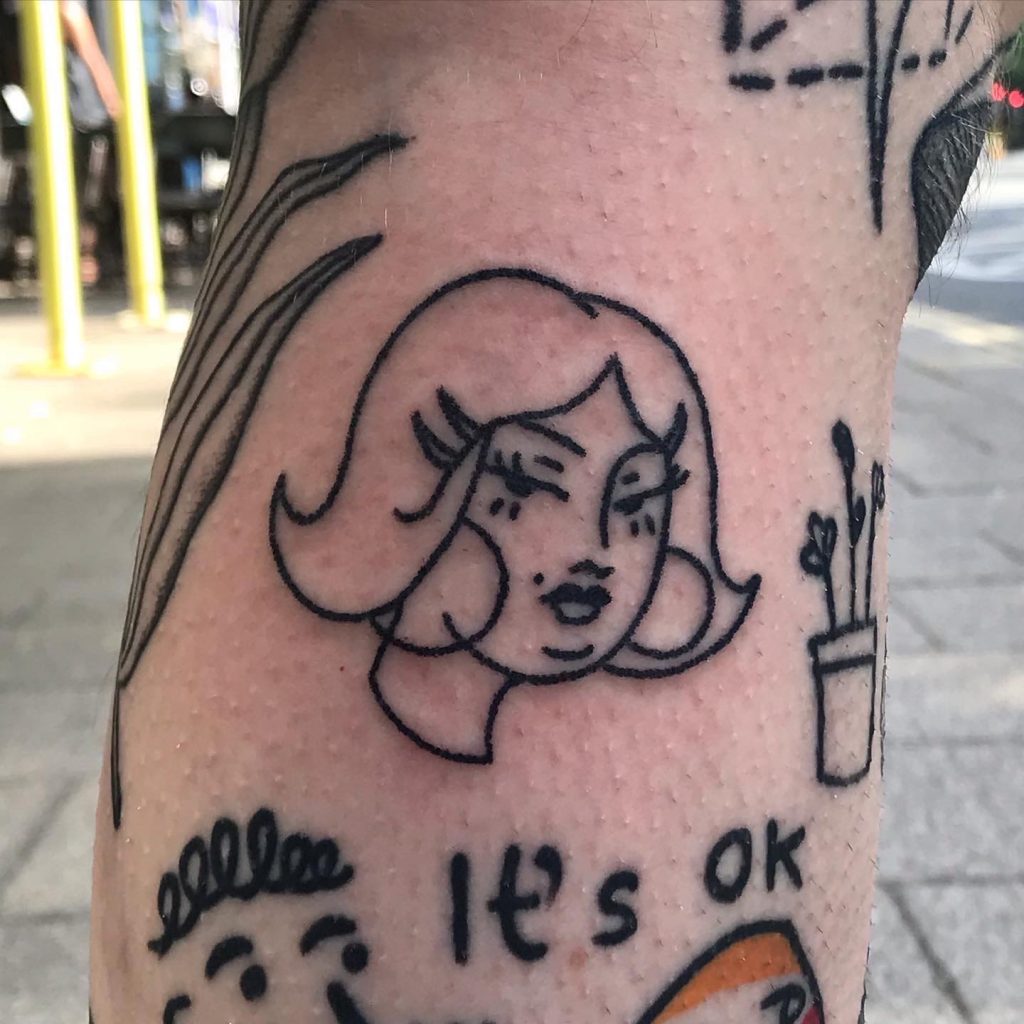
How long have you been tattooing and how did you become an artist? I began learning to handpoke in January 2021 and have been tattooing professionally since January 2022. I am a self / community taught tattooist as opposed to having a traditional apprenticeship – I began by practising on fruit and fake skin with guidance from my partner (who is also a tattoo artist) before gradually moving onto tattooing myself and some very trusting friends.
After graduating from university, I began focusing on developing my tattooing practice as much as I could while working part time before being offered my first residency at a studio in January 2022 where I worked once a week. Since then I have become a resident at two different studios, The Blackhouse Club and K-ink Peckham, and I’m now a full time tattooist.
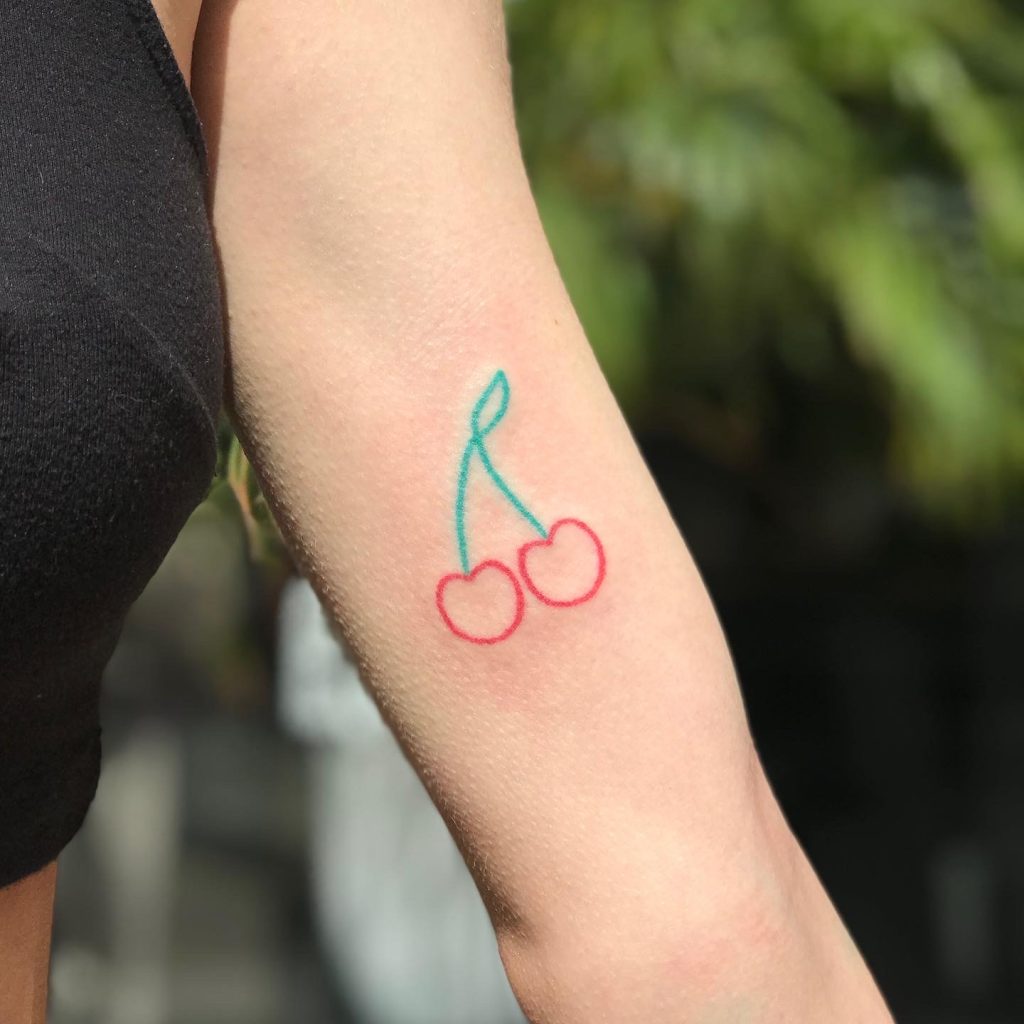
If you weren’t a tattooer what would you be? I would love to be working somewhere in the film or television industry. I studied for a Masters degree in Film Studies while learning to tattoo, originally planning (or at least hoping) to get into screenwriting, which is something I would still really love to explore in the future. I also think I would love to put my artistic skills to good use in set and prop design.
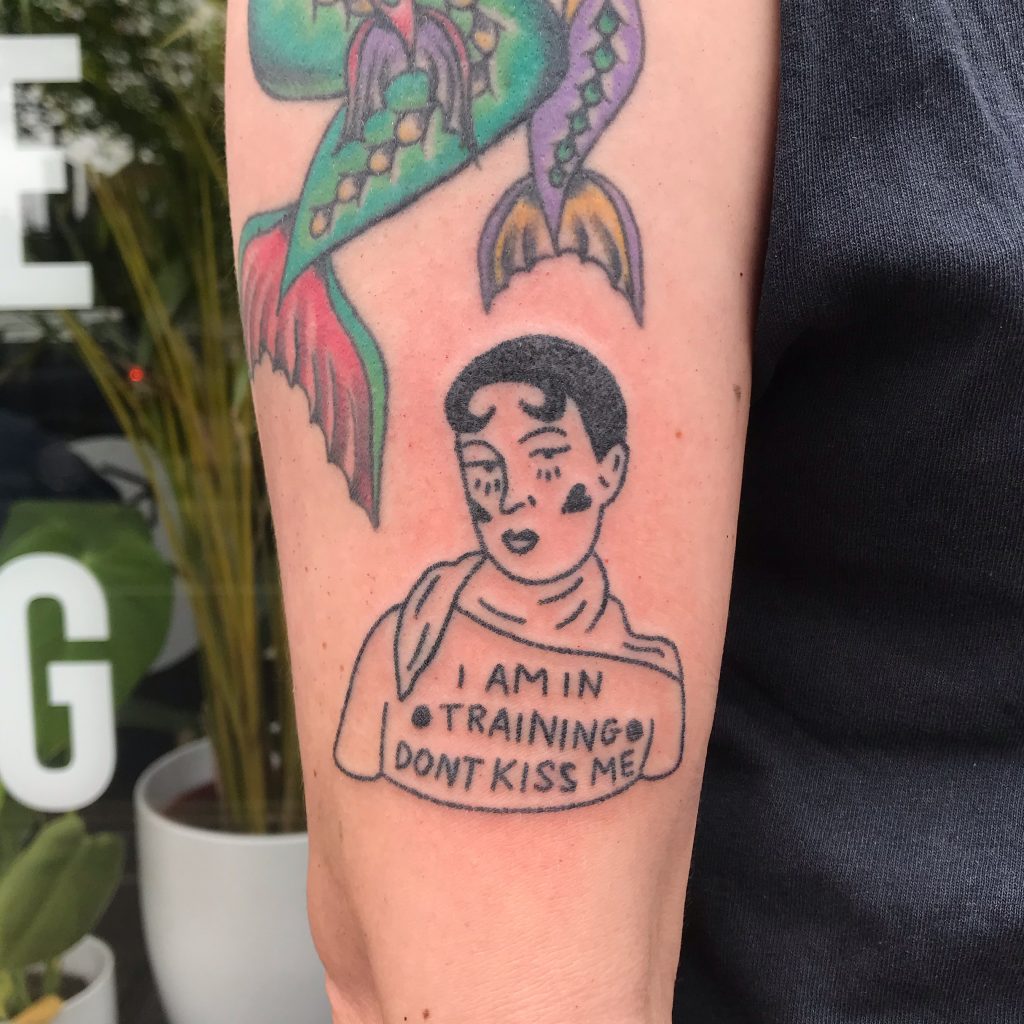
What’s your favourite thing about being a tattooer? This is a really hard question for me because there’s just so much to love! Right now I’d say that one of my favourite things about being a tattooer is the freedom it allows me. Being a self employed, working artist gives me the freedom to choose when and how much I work, allows me to easily take time off when I need it and allows me to travel all over the world (although i’ve only gone as far as London yet!).
As someone who is neurodiverse and struggles with my mental health, I also find that this freedom is a huge help in helping me take care of myself better. As I am able to take guilt-free rest and time away when I need it as to not burn myself out or become so overwhelmed to the point of meltdown, like I used to experience frequently during other jobs and my education.
I’d say in general the best thing about being a tattoo artist is the fact that I am able to be an artist full time, as simple as that sounds. Not all artists have the luxury of being able to entirely support themselves financially with their artwork, and I am so grateful that I am able to make an earning this way, especially as someone who has really struggled to make a liveable income in the past while working “ordinary” jobs, let alone through making art!
I still wake up some days in disbelief that I get to make one-of-a-kind, permanent, art on my lovely clients for a living and not just for the sheer joy of it.
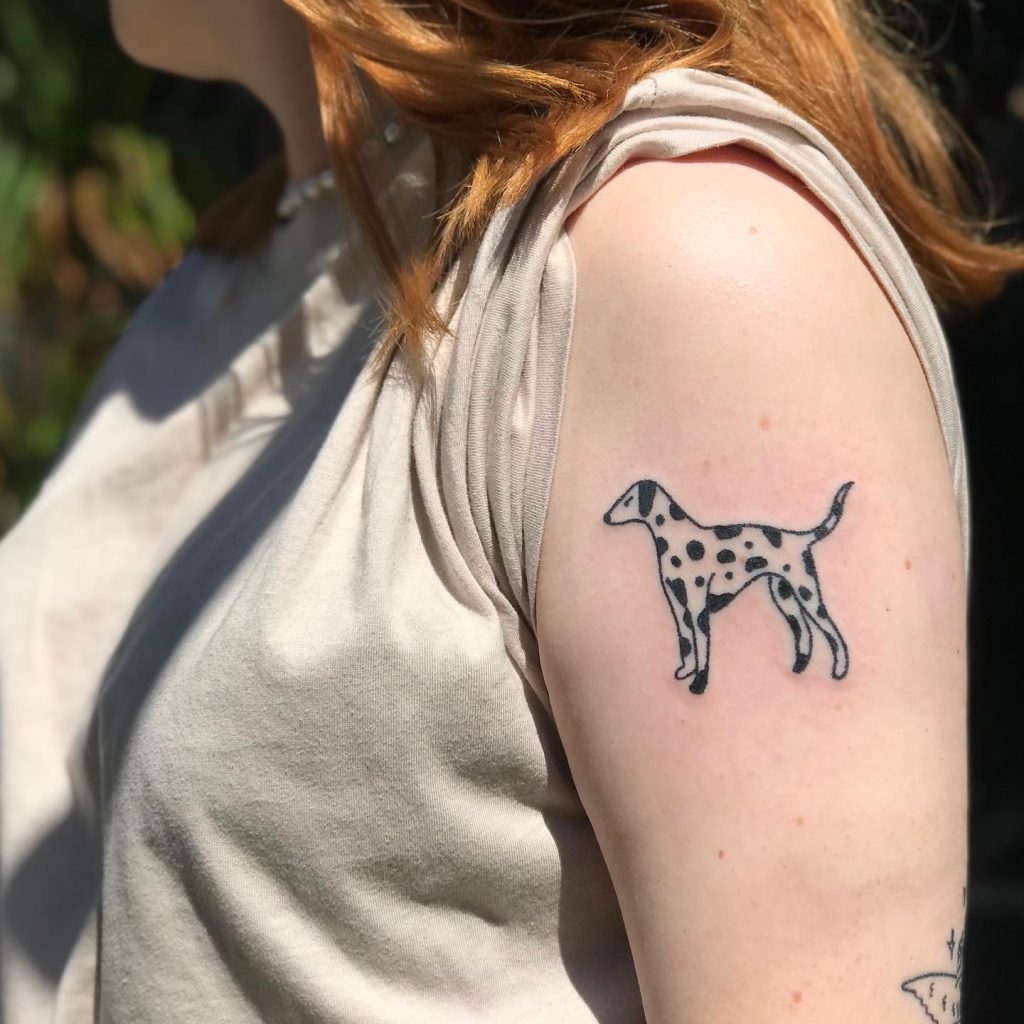
Can you tell us about your experiences in the tattoo industry? Although I haven’t been in the industry for very long, I can safely say that so far my experience has been pretty great. I have had the opportunity to meet and work alongside so many incredibly talented artists, some of which I’m lucky enough to call my friends. I am so lucky to know such kind, passionate and deeply creative tattooists who I have learned so much from.
I also cherish all of my wonderful clients, the best living and breathing canvases that anyone could ask for, who have all placed so much trust in me.
Of course, like any industry, the tattoo industry does have its issues which I am no way naive to. Unfortunately and sadly almost inevitably, there are a fair few bad eggs who have made their way into this industry. From tattooists who massively overcharge clients who don’t know any better or who exploit the labour of other artists and apprentices, tattooists who unashamedly steal designs from other artists and even tattooists who are just downright creeps who prey on young, vulnerable clients and artists.
I have been very fortunate that I have come into contact with only a small handful of these bad eggs and any interactions I have had with them have been brief. I’m incredibly thankful to now work in two lovely studios that are genuinely inclusive, safe, and clean (I know this sounds like a given, but you’d be surprised).
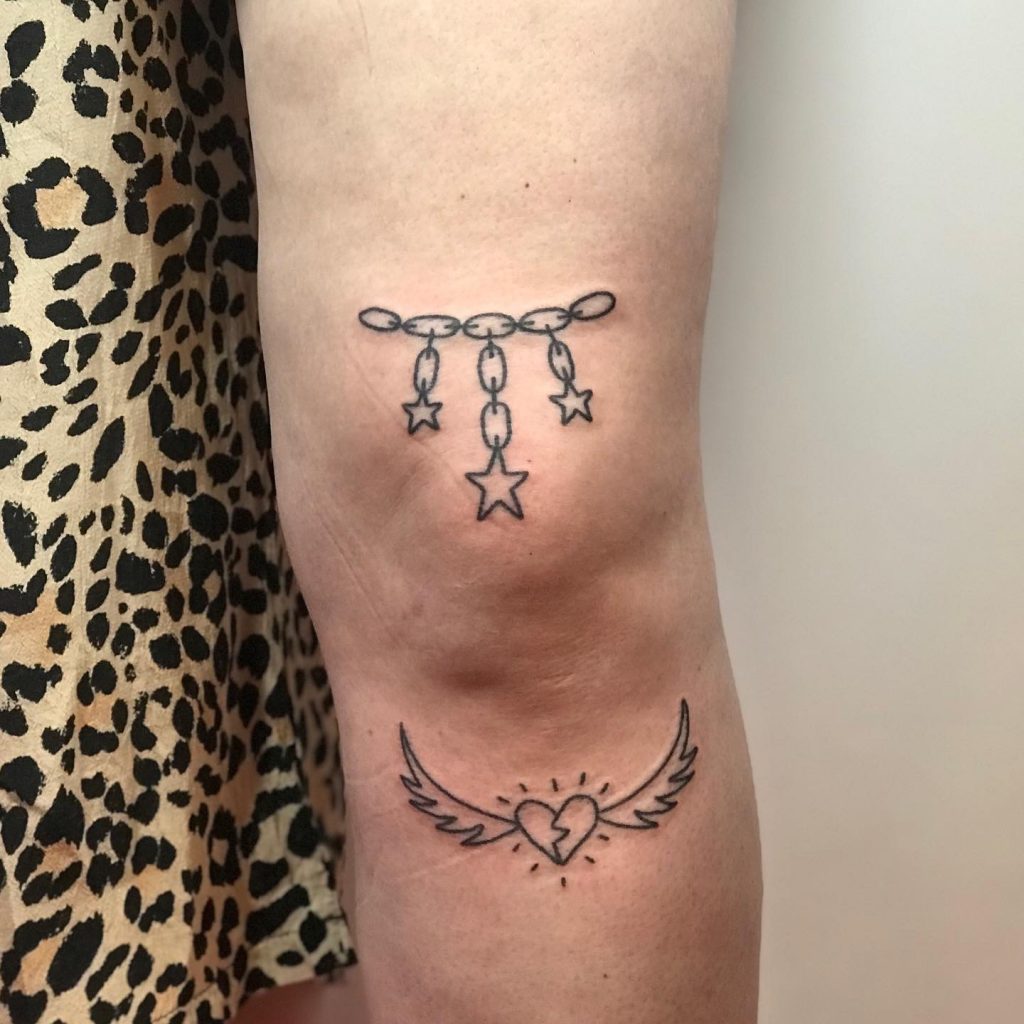
How would you describe your work? I find my own style quite difficult to describe. I’ve been told by others that my work is ignorant style, but to me this feels like quite a tricky categorisation, especially since I often take a lot of inspiration from traditional style tattooing which ignorant style is often defined in opposition to.
I often describe my style as ‘illustrative’, especially as I started off doing illustration work and translated that drawing style into tattooing.
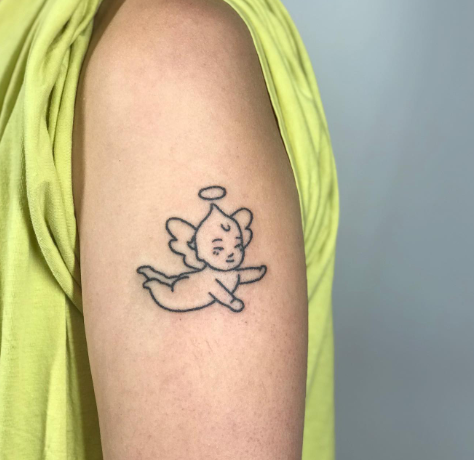
We love your bold line style which is not often seen with handpoke tattoos, what drew you to this style? I’m drawn to the bolder style of lines mostly because I find that bolder lines tend to heal better and are more consistent than more fine lines, They also tend to age a bit better. It’s also a style I personally enjoy myself, a lot of the tattoos I have on my body use thick, bold lines.
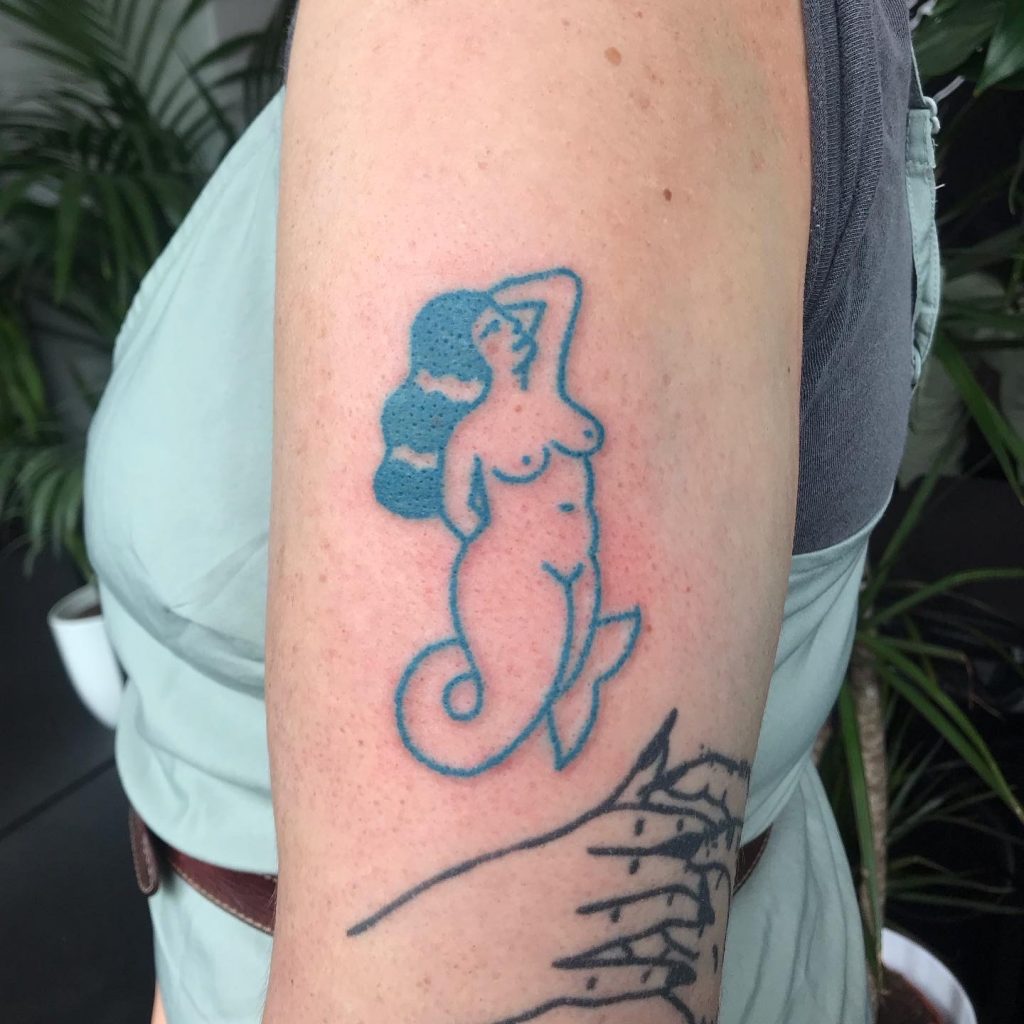
What inspires you? When designing flash I find that I am inspired by all sorts of other art forms. Lots of my flash is directly inspired by music, films, and fine art. I have made flash sheets specifically based on films like Midsommar and Beetlejuice, and artists such as Claude Cahun, Frida Kahlo and Henri Matisse.
I also like to take inspiration from traditional tattoo flash from artists like Sailor Jerry, as well as French and Russian prison style tattoos. However, most of the time when drawing flash I just sketch whatever first comes to mind without any references at all, and just use whatever images that come to me subsciously as my main source of inspiration.
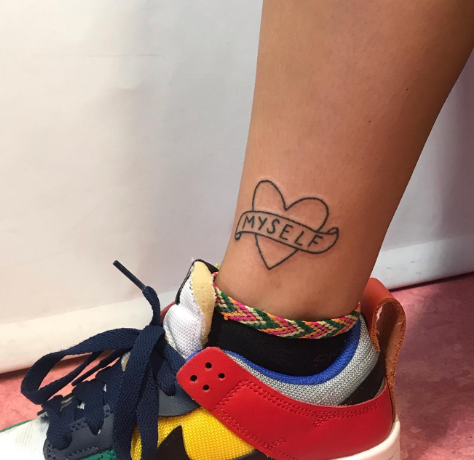
Do you have a favourite tattoo artist or someone who inspires you? I have many, many favourite tattoo artists, almost too many to name! I’ll start by giving a shout out to all of the amazing artists I work with at my main studio, The Blackhouse Club, who are all so wildly talented and inspire me every day; @traddy_issues, @orchard_tattoo, @nolseytattoo, @amieculver_tattoo, @luna__tattoos, @roblaketattoo, @kardatoons, @loverat.tattoo, @hella._.tattoos and @hangedtattoo.
Here are some of my favourite tattoo artists from the top of my head, who I have either already been tattooed by or I hope to be tattooed by in the future; @victoria.absurd, @chop_stick_n_poke, @chaoticmotherly, @slimesistren, @alitbruce, @xia_smith_tattoo, @starttodaytattoo, @slowpuncture, @yo.pokes, @birthdae, @nancydestroyer, @ktchnwnch and @story.tatter.
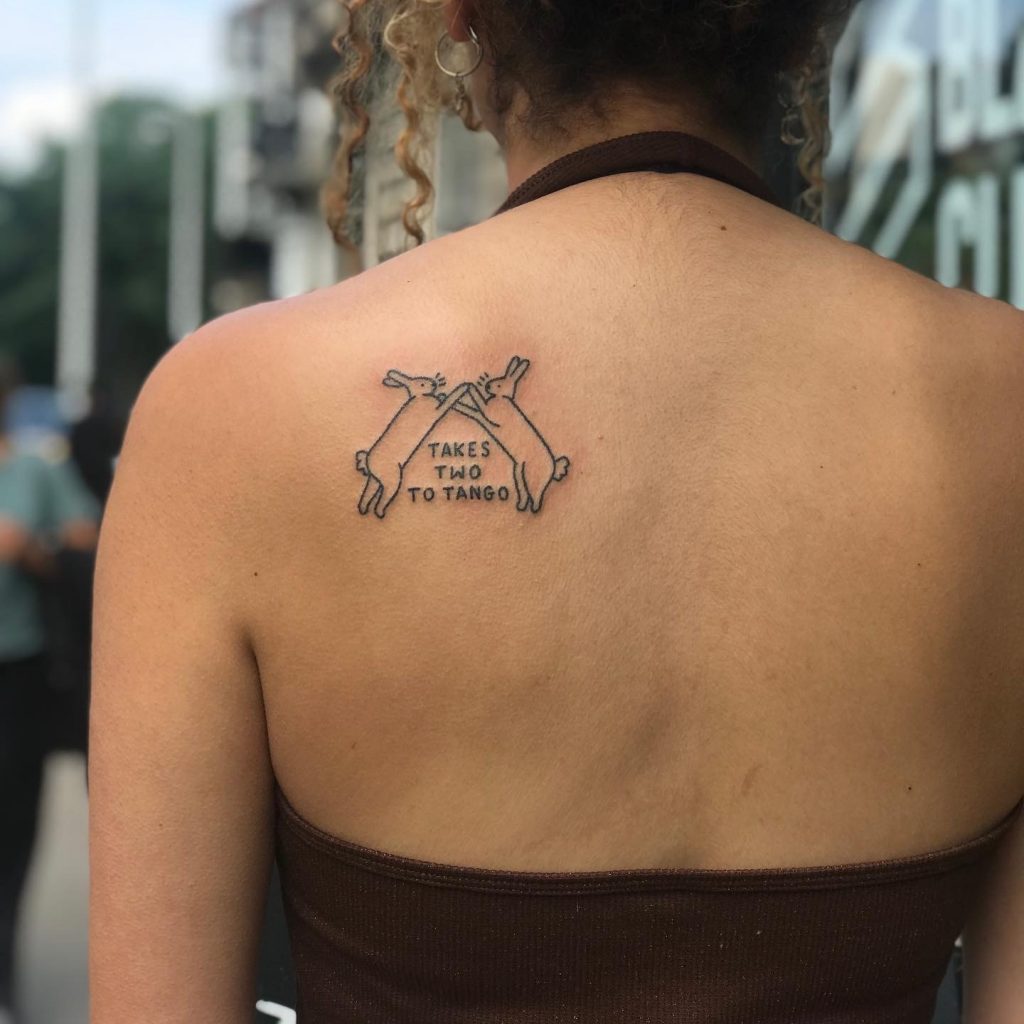
Can you tell us about the process behind your tattoos? When designing flash, I often first sketch onto paper whatever images or words are floating around in my mind. I then take these sketched ideas into procreate where I draw them up digitally, so I can make sure the designs are neat and the line weights are consistent. These line drawings I can then use to make a stencil for if someone gets the particular design tattooed.
As for the actual tattooing process itself, it’s pretty simple since I use a hand poke method. Typically I tape my needle to a sterile tongue depressor with medical tape and then wrap it with grip tape to help make it a bit easier to hold steady while working.
I try to follow my clients lead on whether they want a quiet or chatty session as I don’t mind doing either (although I do find I make my best work when things are a little bit quieter and I am able to concentrate on the tattoo entirely), and offer as many breaks as they need so that it’s a comfortable, low-pressure experience. Consent is incredibly important.
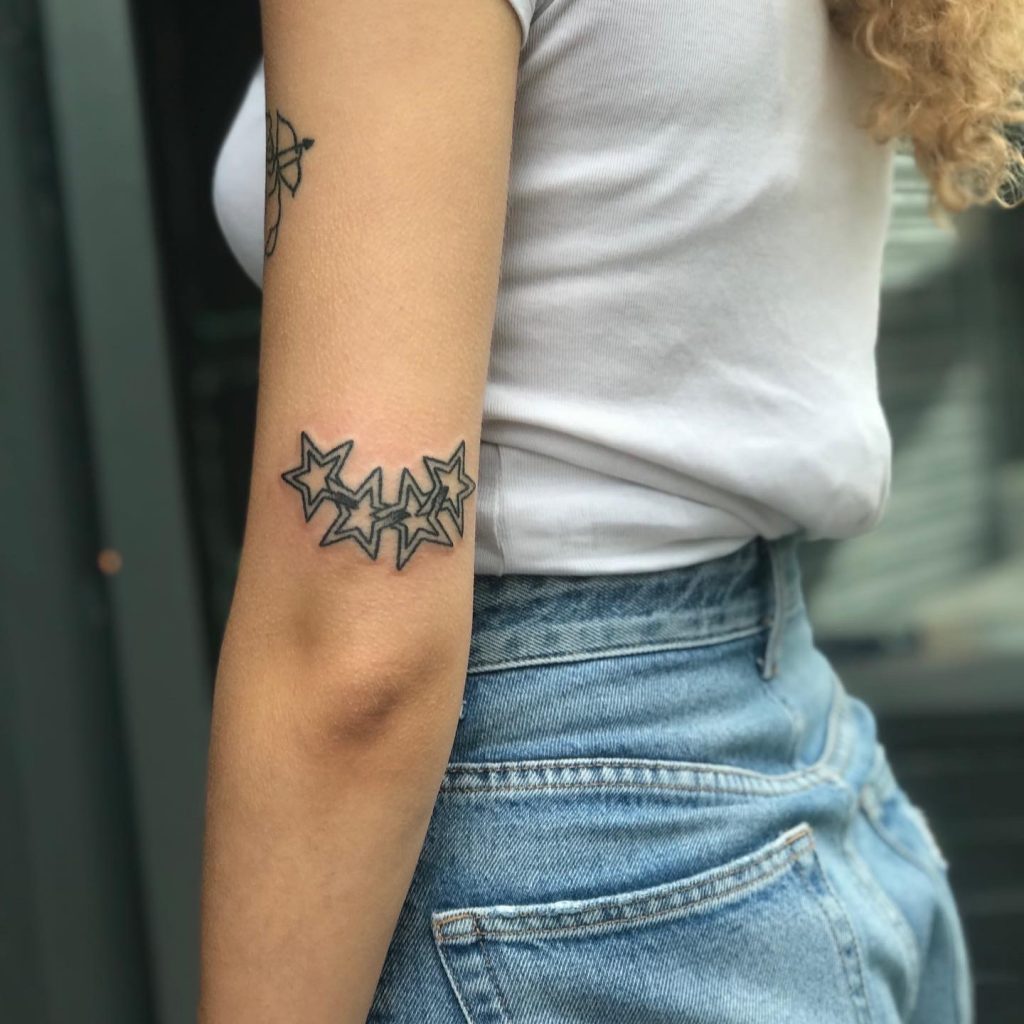
What drew you to handpoke instead of machine tattooing? Handpoke is just the first method I was taught when I was learning to tattoo and it stuck! Although it requires a bit more patience, I like that I can really take my time when hand poking, and also that it can be a bit more gentle for the client. I would eventually like to learn how to use a machine so I can make bigger and more complex pieces, but I’m not in any rush.
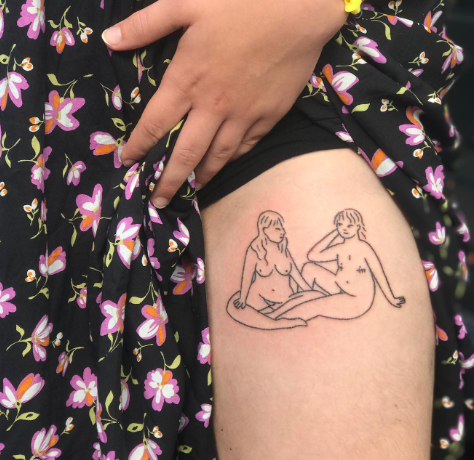
You often use coloured ink, does this impact how you tattoo when handpoking? Coloured inks do tend to be a bit trickier to handpoke. Coloured inks tend to be much thicker than black ink, so it can require a bit more perseverance to get them into the skin, especially if you’re trying to create a block of colour as opposed to coloured lines. Even though they’re a bit harder to work with, I do really enjoy using colour in my hand pokes.
I think I especially enjoy using them because I don’t personally have any colour tattoos (not for any particular reason, I just got a lot of black tattoos and then decided that I’d committed to the aesthetic), so I get to live vicariously through my clients.
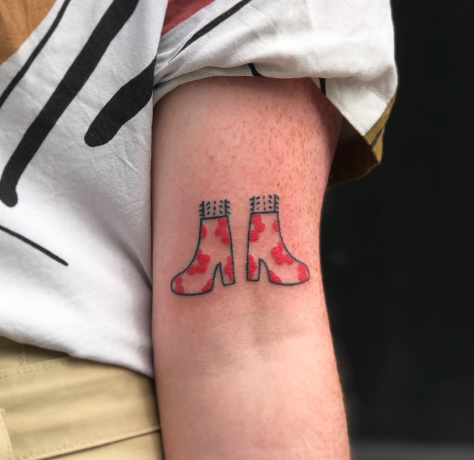
What would you say to someone who isn’t sure whether to get a handpoke tattoo? The first thing I would think about is if the person already has other tattoos done by machine – usually I would reassure them that handpokes, depending on the placement, are usually a bit more gentle and less traumatic for the skin. So you can expect the experience to be a little less intense than getting tattooed by machine and that they are typically a bit easier and quicker to heal.
I also think that some people are unsure about getting hand poke tattoos because they have some misconceptions about handpoked tattoos – some clients before their appointment have told me that they’ve been told that handpokes are a lot more painful, that they don’t last as long or even disappear completely after a number of years, or that they will take many more hours than a tattoo done by machine. I like to reassure people that lots of people think that they are less painful (although everyone’s pain tolerance is different and subjective), that some handpokers, including myself, can produce work quite quickly, and that they are just as permanent as machine tattoos as long as they have been done properly.
Of course handpoked tattoos aren’t for everyone, and people are entitled to their personal preferences when it comes to getting tattooed. If you find that you can struggle with sitting still for longer periods of time, or if you particularly enjoy the noise or the speed of being tattooed by machine then maybe handpoke won’t be your favourite. But I think it’s always worth a try, especially if you’re looking to learn how to tattoo as it’s a great way to start.
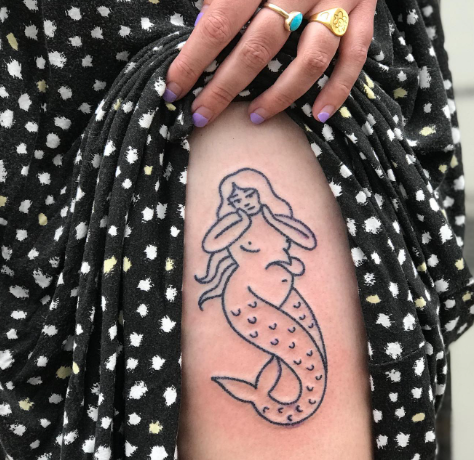
What do you like to tattoo and what would you like to do more of? My favourite things to tattoos are human faces/figures, inanimate objects and anything heart shaped. Luckily, I get to tattoo these things a lot! I find that the motifs I’m drawn to change all of the time, both in the things I like to draw and get tattooed myself – currently I seem to be obsessed with sacred hearts, sea shells and hands.
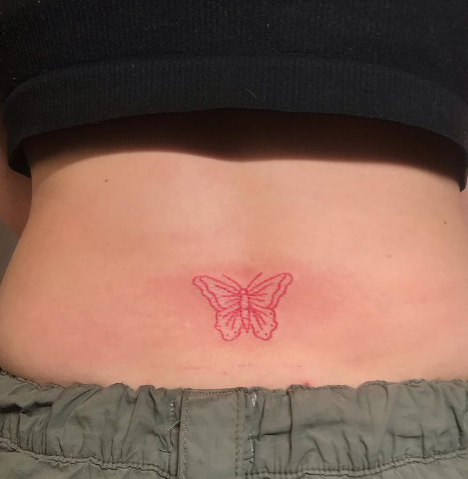
Can you tell us about your own tattoos? Are you a tattoo collector? I do like to consider myself a tattoo collector, so much so that I try to limit myself to less than three tattoos by any given artist so that I have room for as many different artists’ work as possible. I don’t tend to stick to one style for my own tattoos – I have a mixture of blackwork, ignorant style, illustrative, fine line and traditional, and I also have a mixture of handpoke and machine.
The only thing that keeps my collection cohesive is the fact that I only have black ink tattooed on me. Although I absolutely love colour tattoos, I personally only like to have black tattoos myself so that they don’t clash with each other, especially since they vary so much in style.
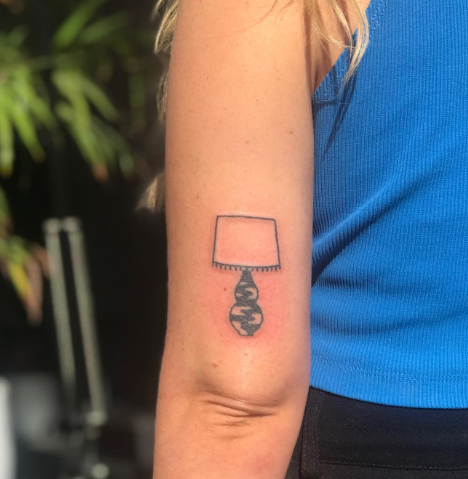
Do you have a favourite tattoo experience? I can’t think of any one experience that I would call my favourite, and I’m very lucky in that all of my experiences in getting tattooed so far have been positive ones. I feel most comfortable and relaxed when being tattooed by friends, and other queer and/or neurodiverse tattooers, as I feel there less pressure to mask and I feel more comfortable in asking questions and setting boundaries.
What moment in your career are you most proud of? It’s hard to pinpoint one specific moment when each day is so different. Honestly, it sounds cheesy, but I’m proud of every new tattoo that I get to make. I also must say that being reached out to by Things & Ink to do this interview is a highlight in and of itself is a proud moment for me and I am extremely grateful for the opportunity to gush about my love of tattooing.
Be sure to follow @thursdaygurl_ for more amazing tattoos, fun flash and appointment details.
